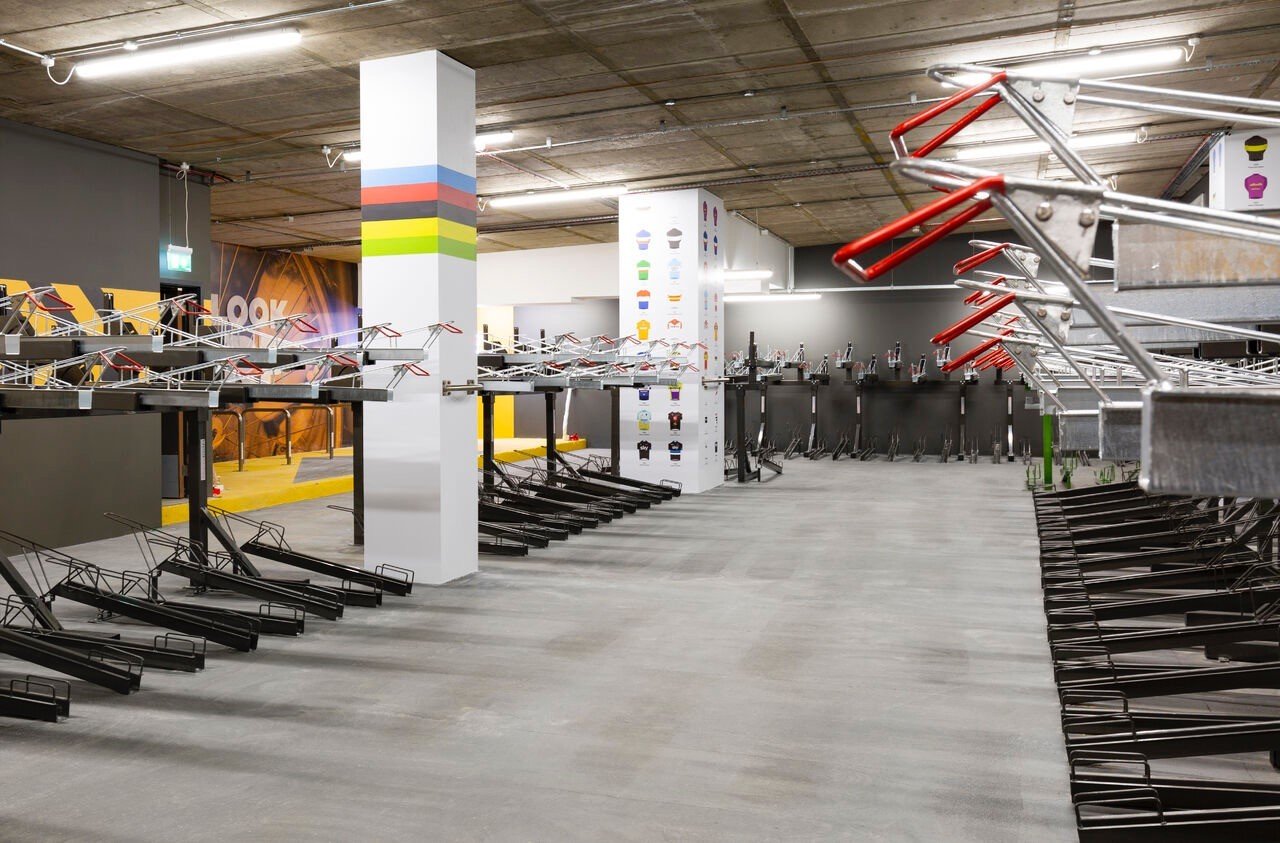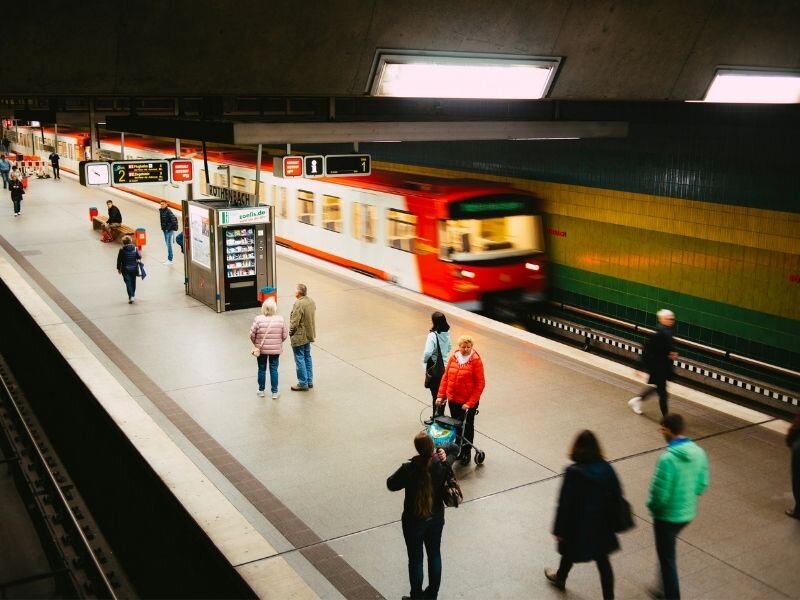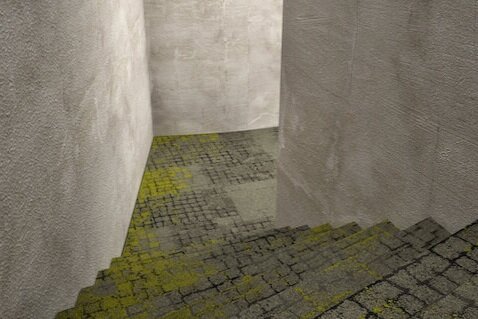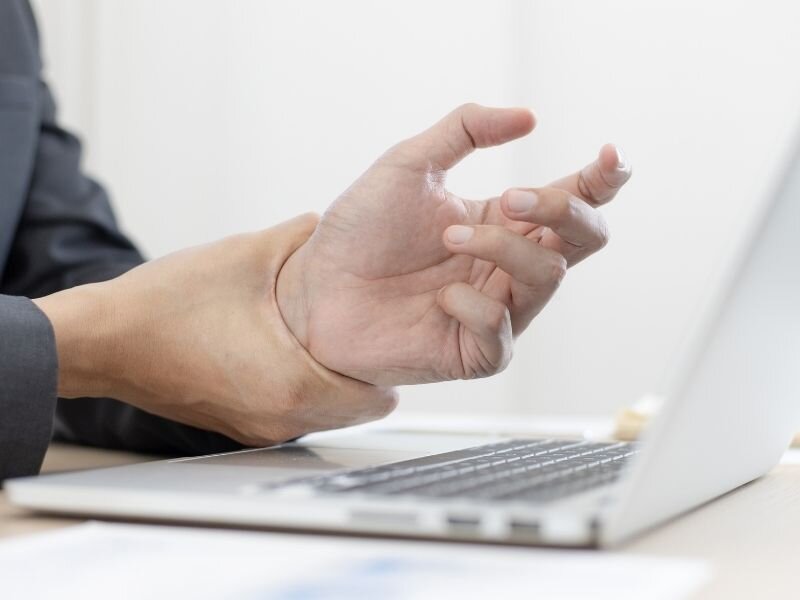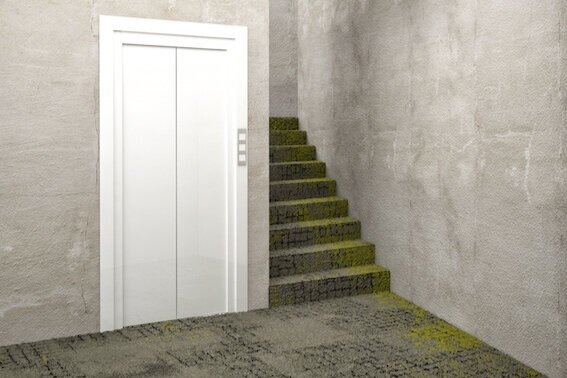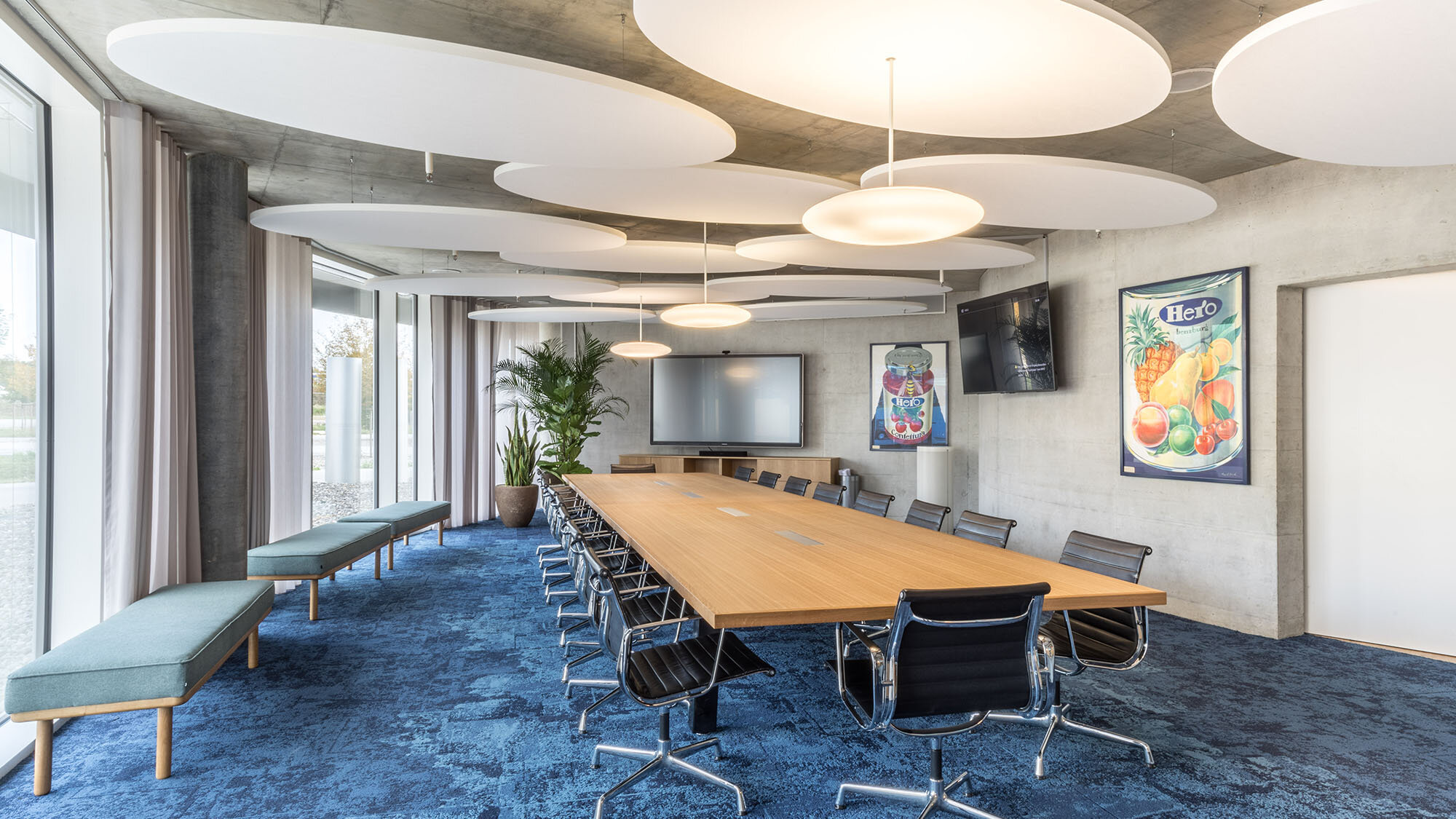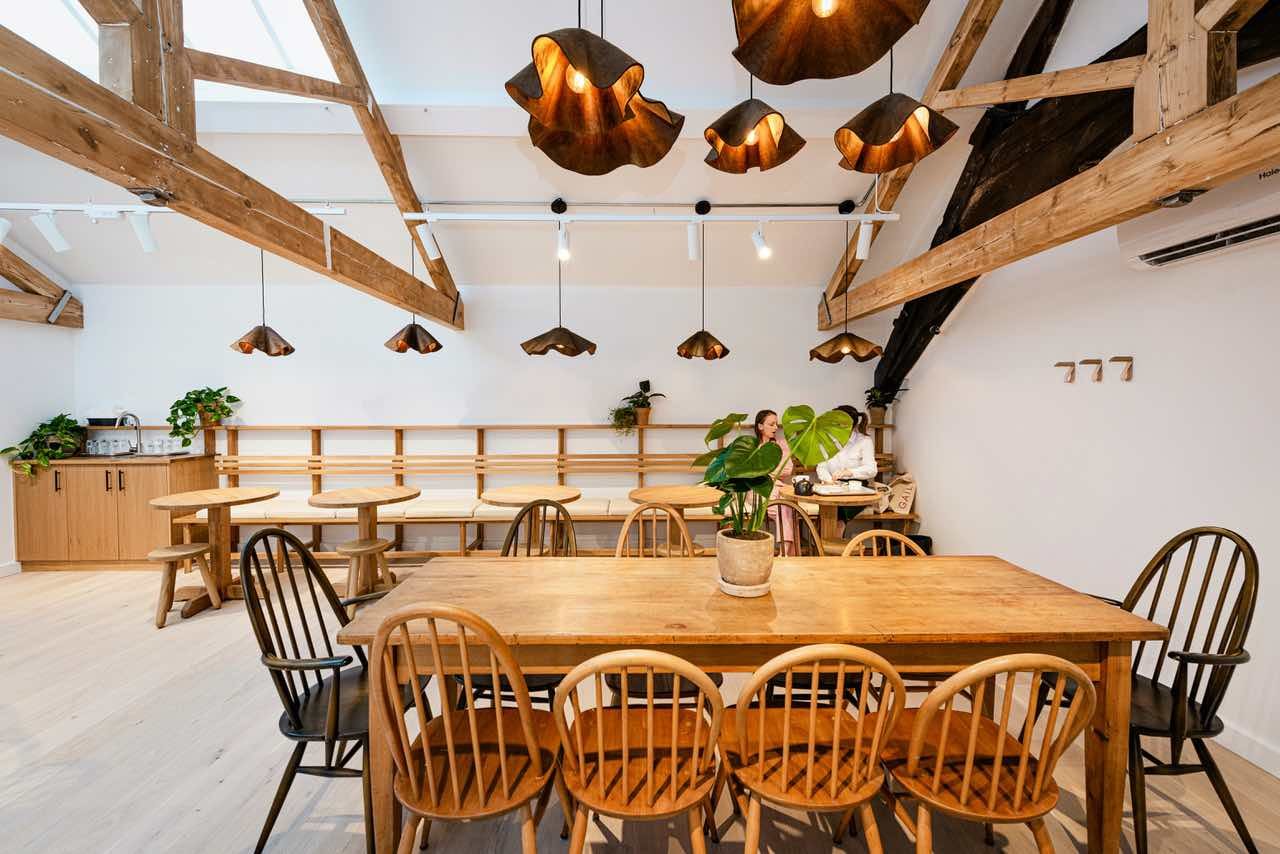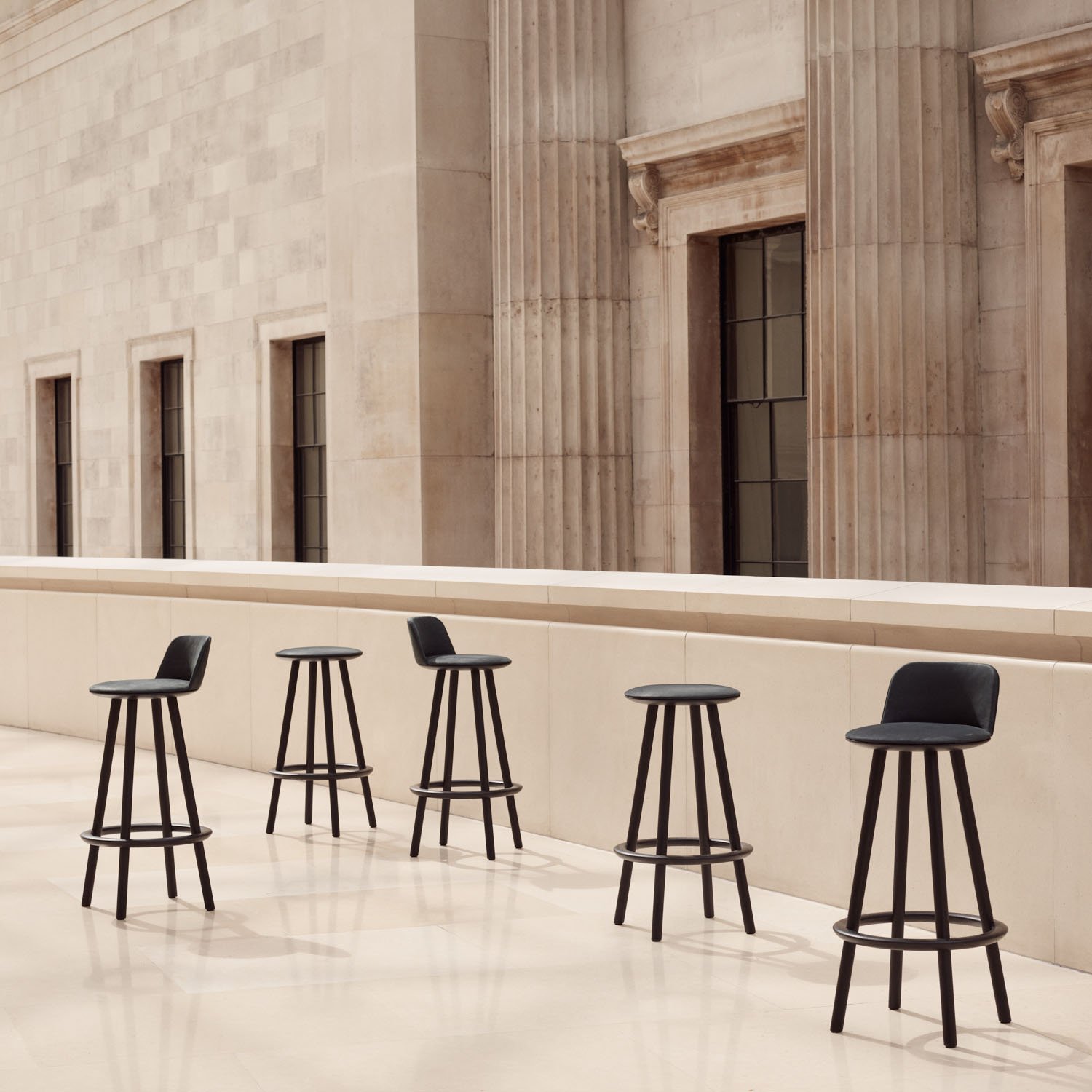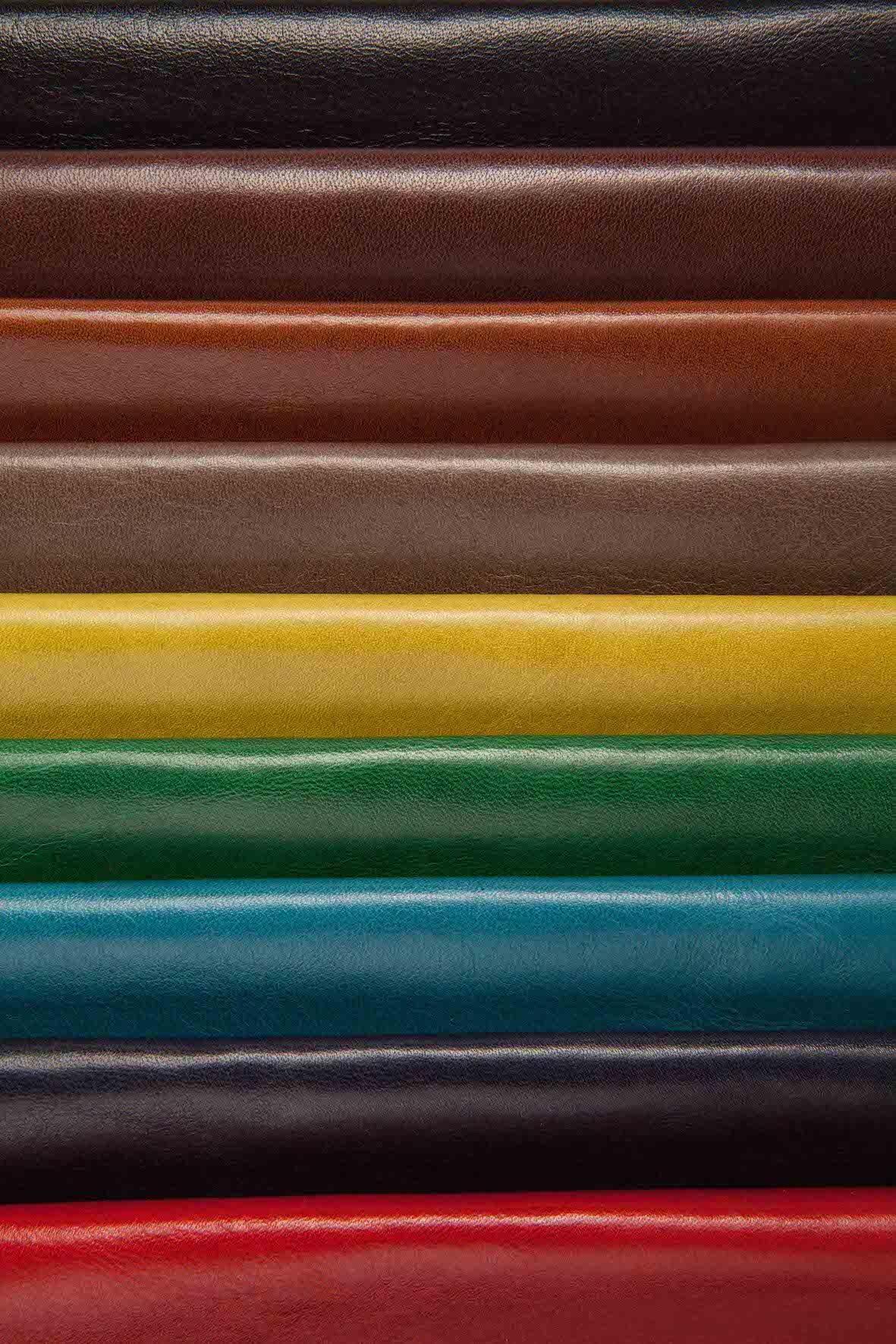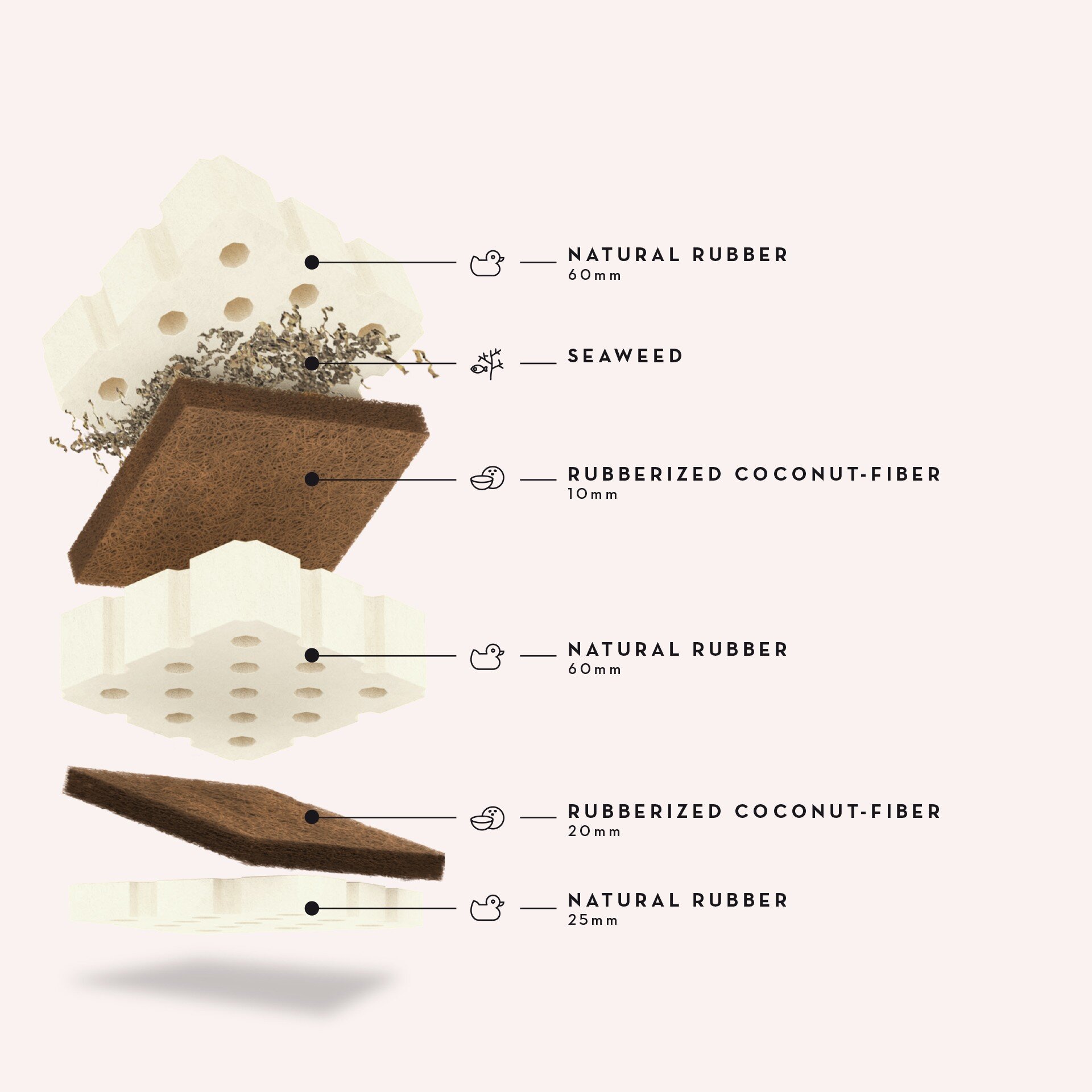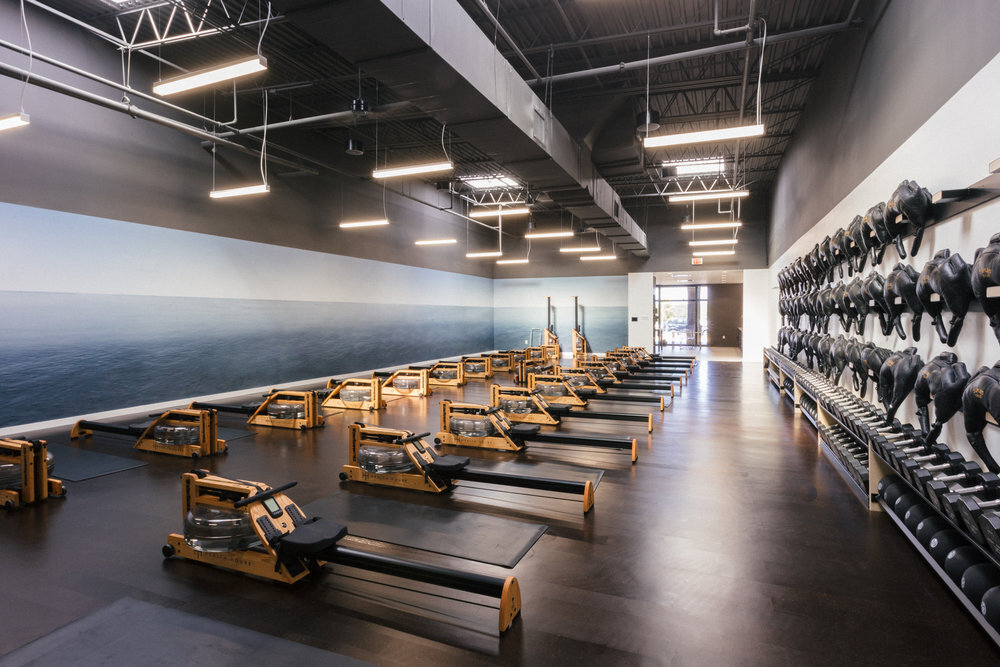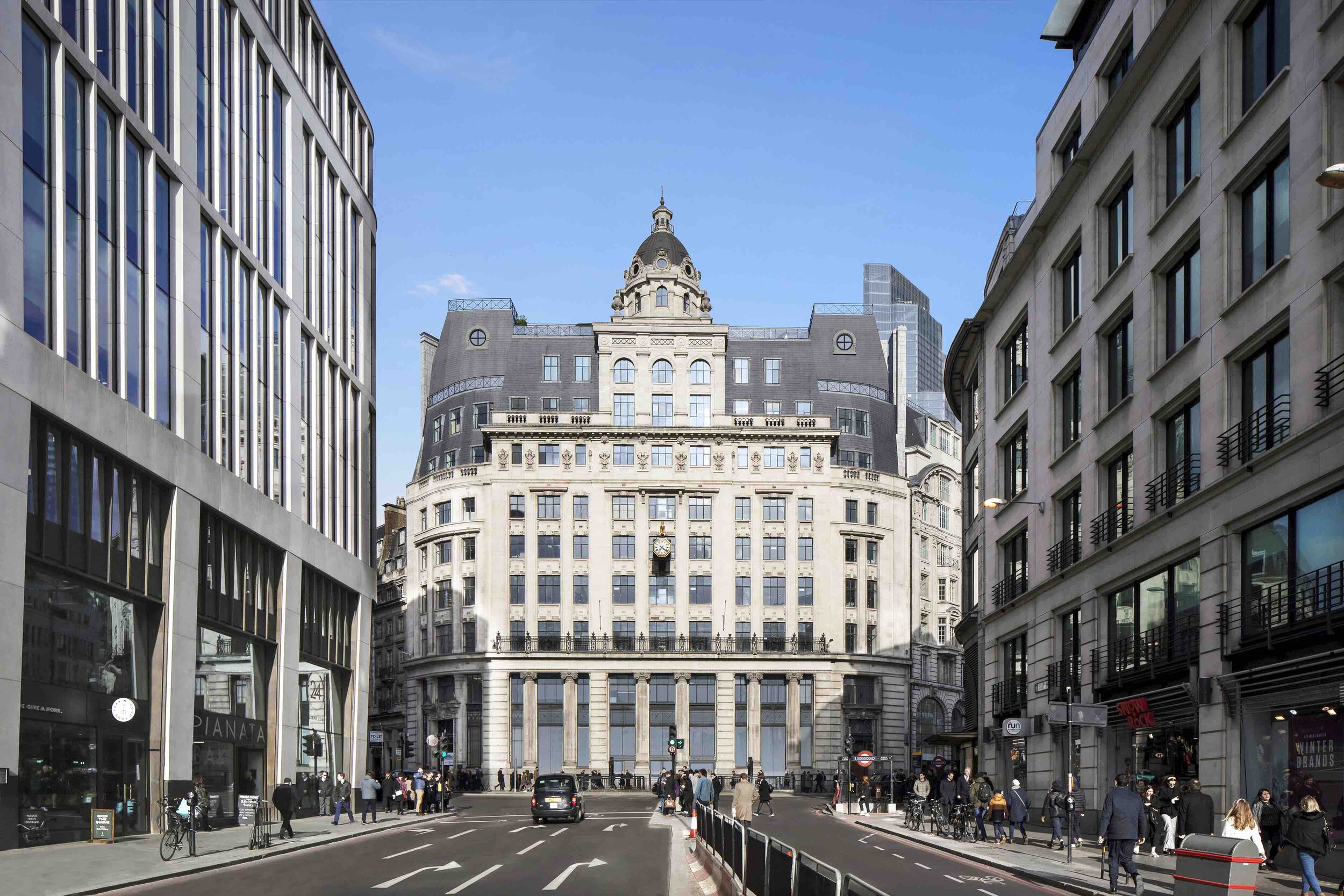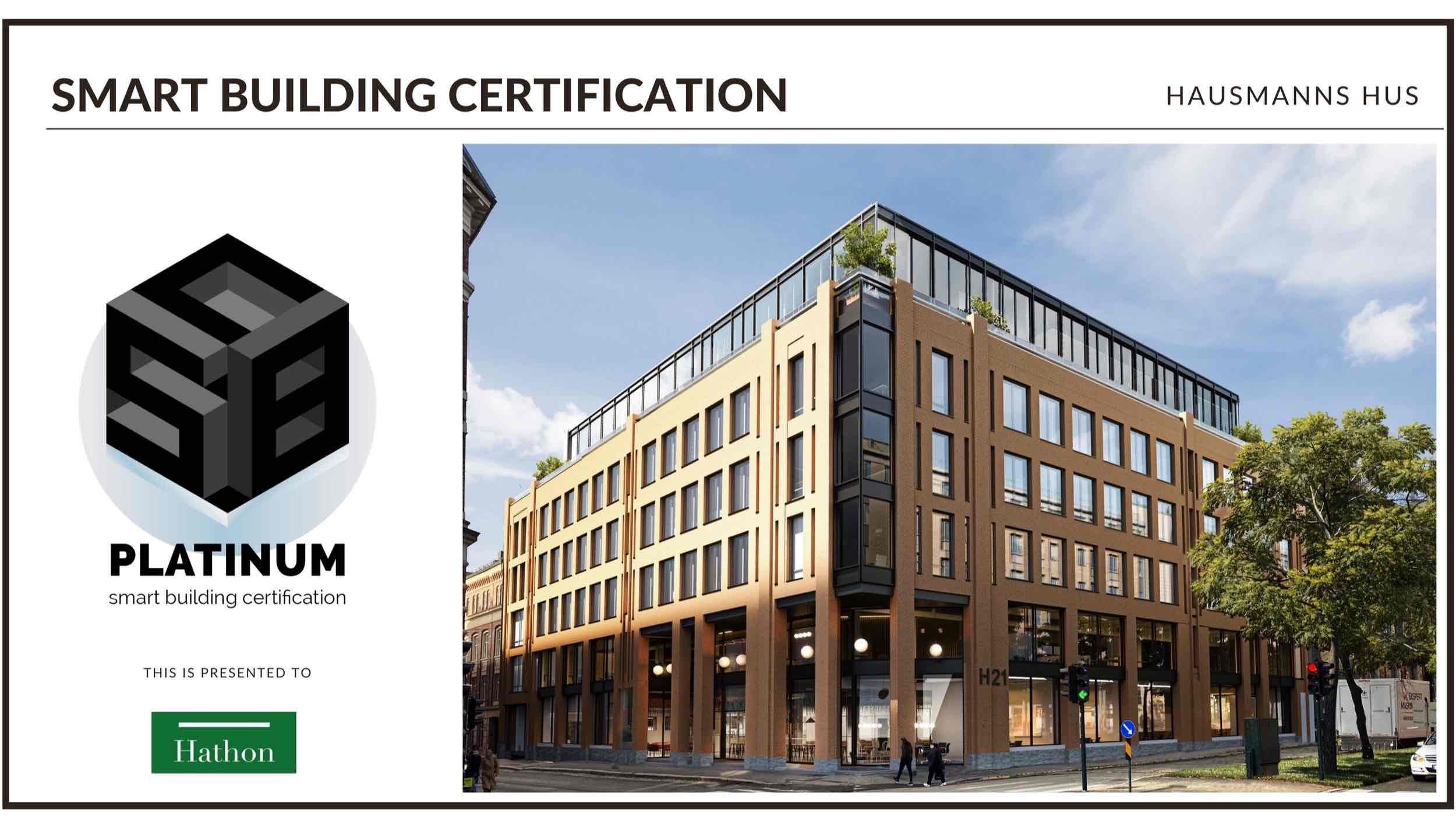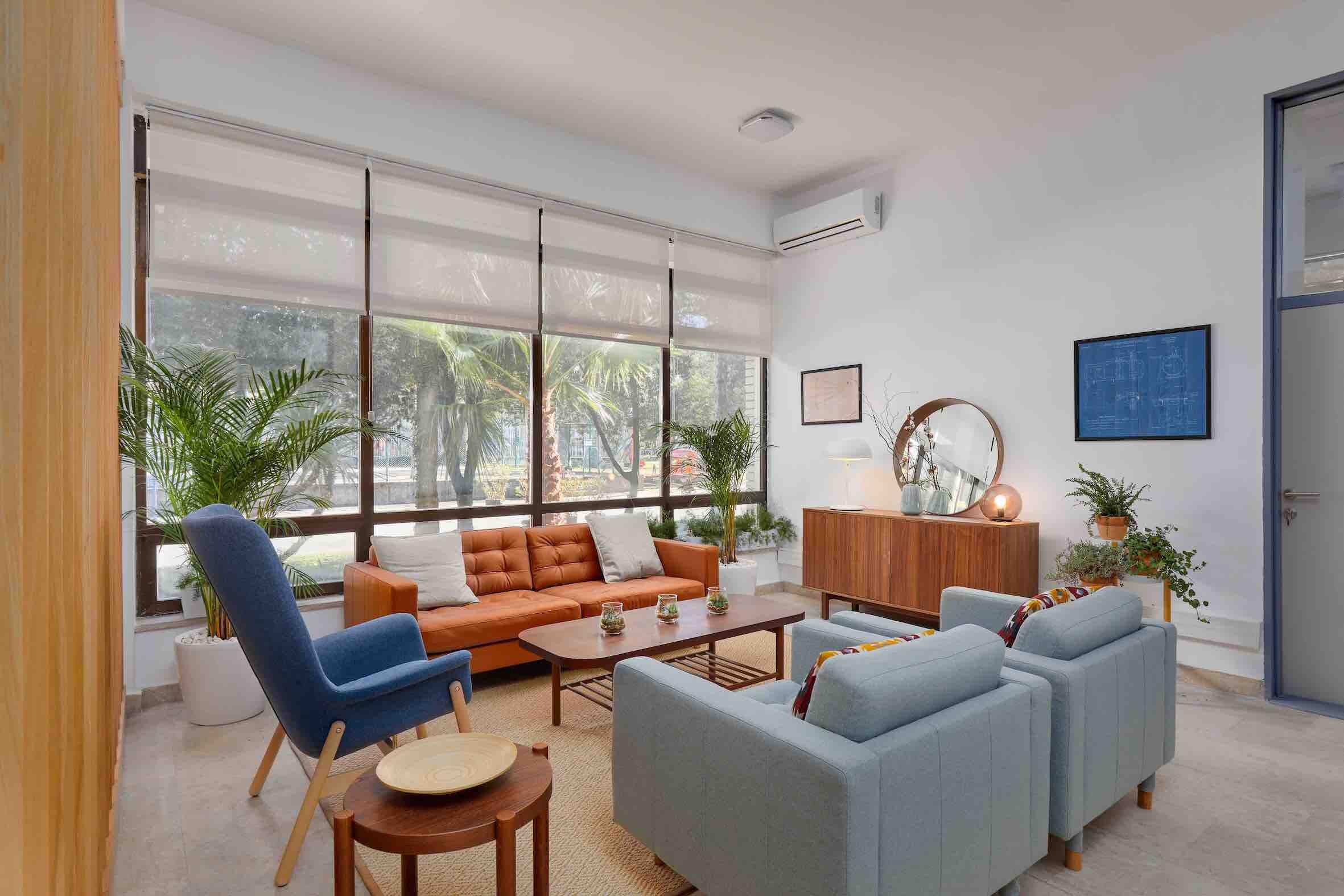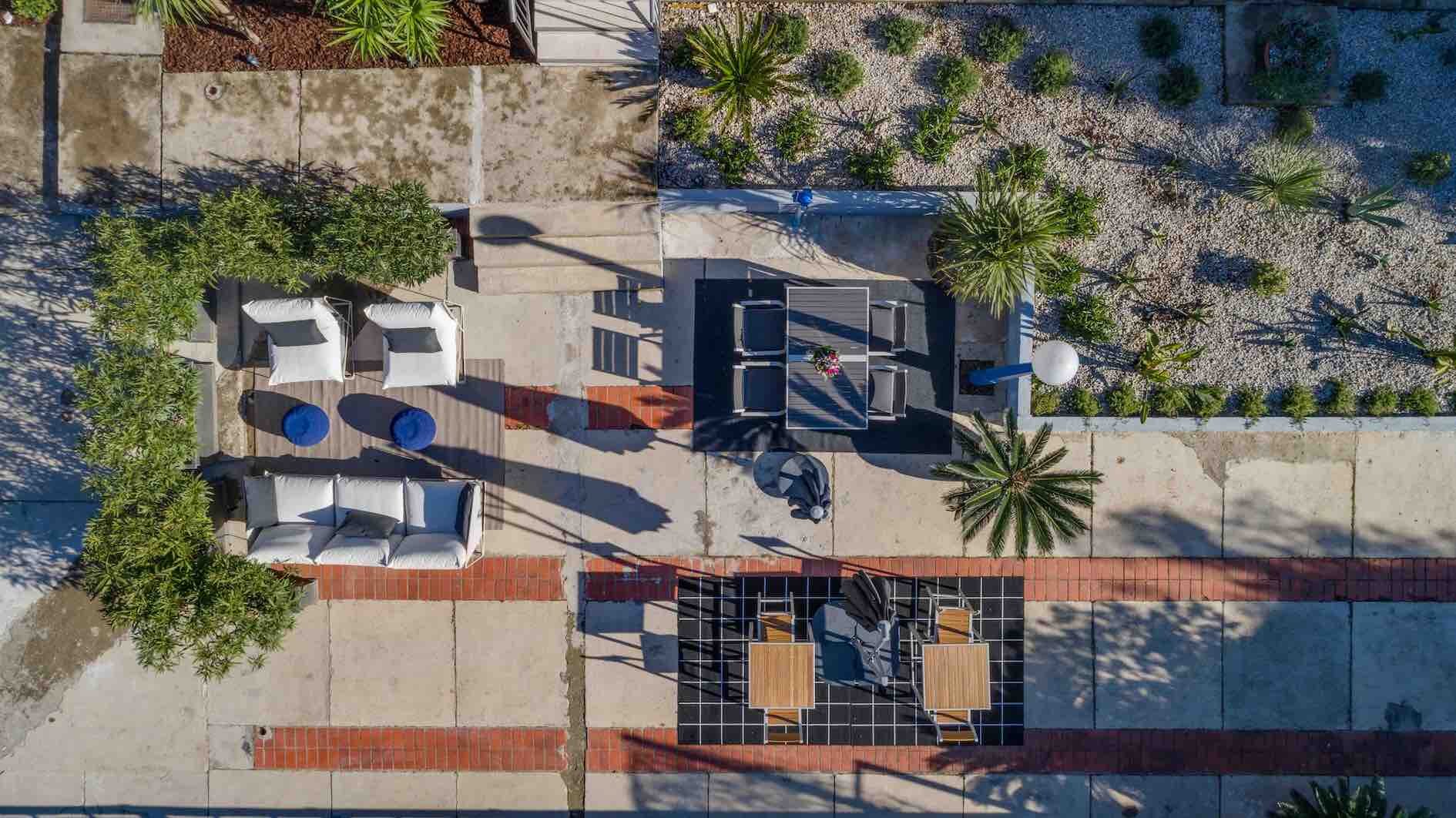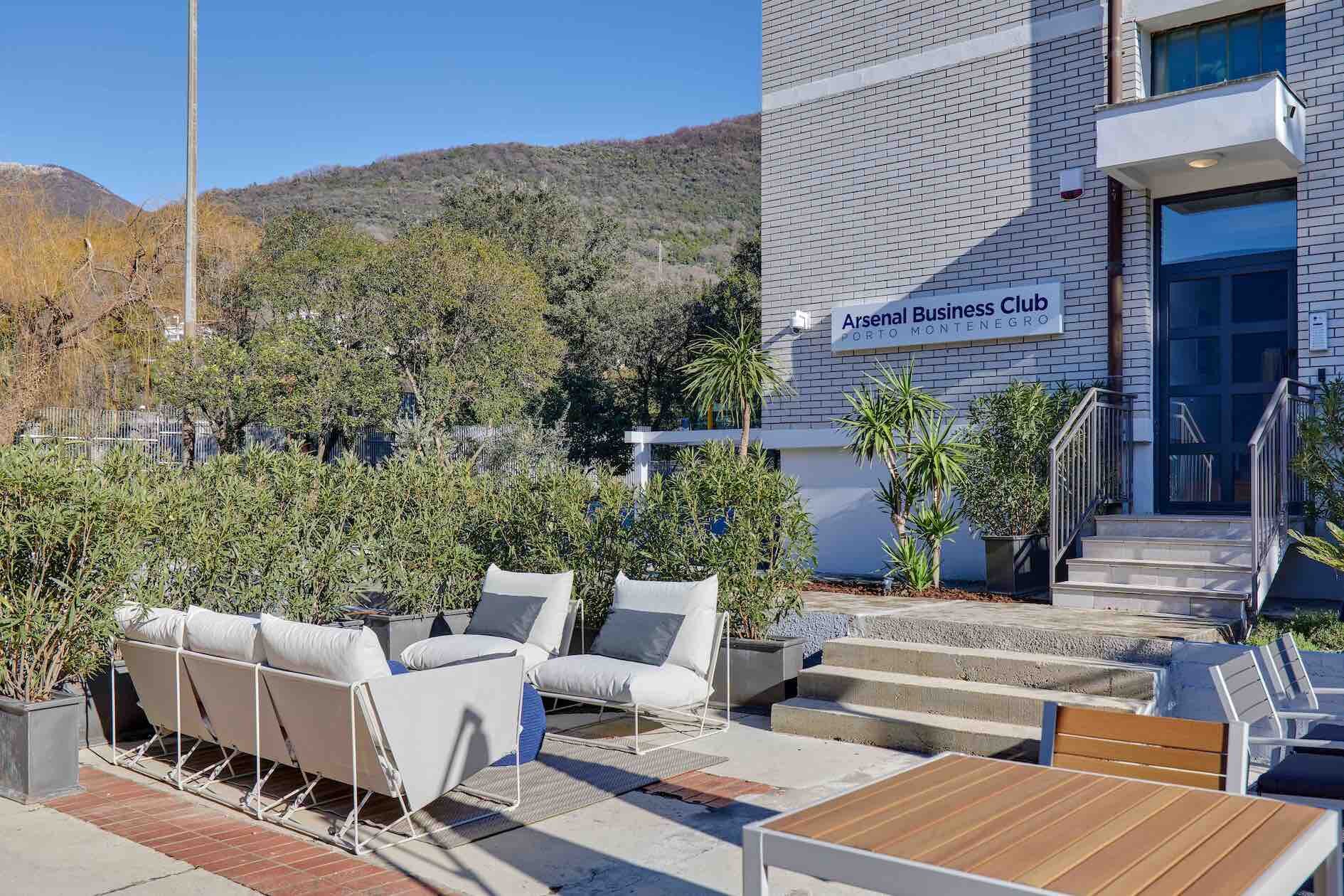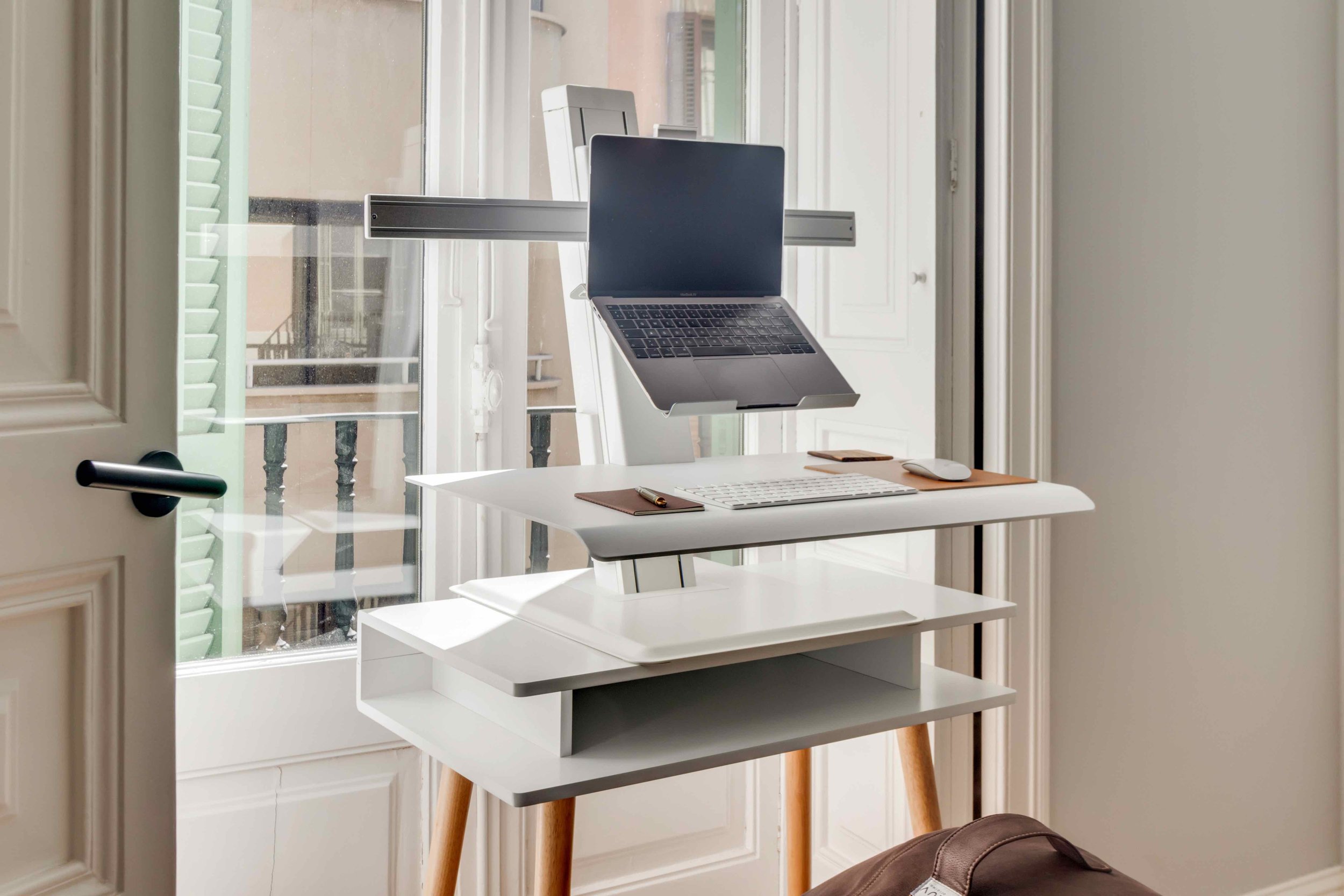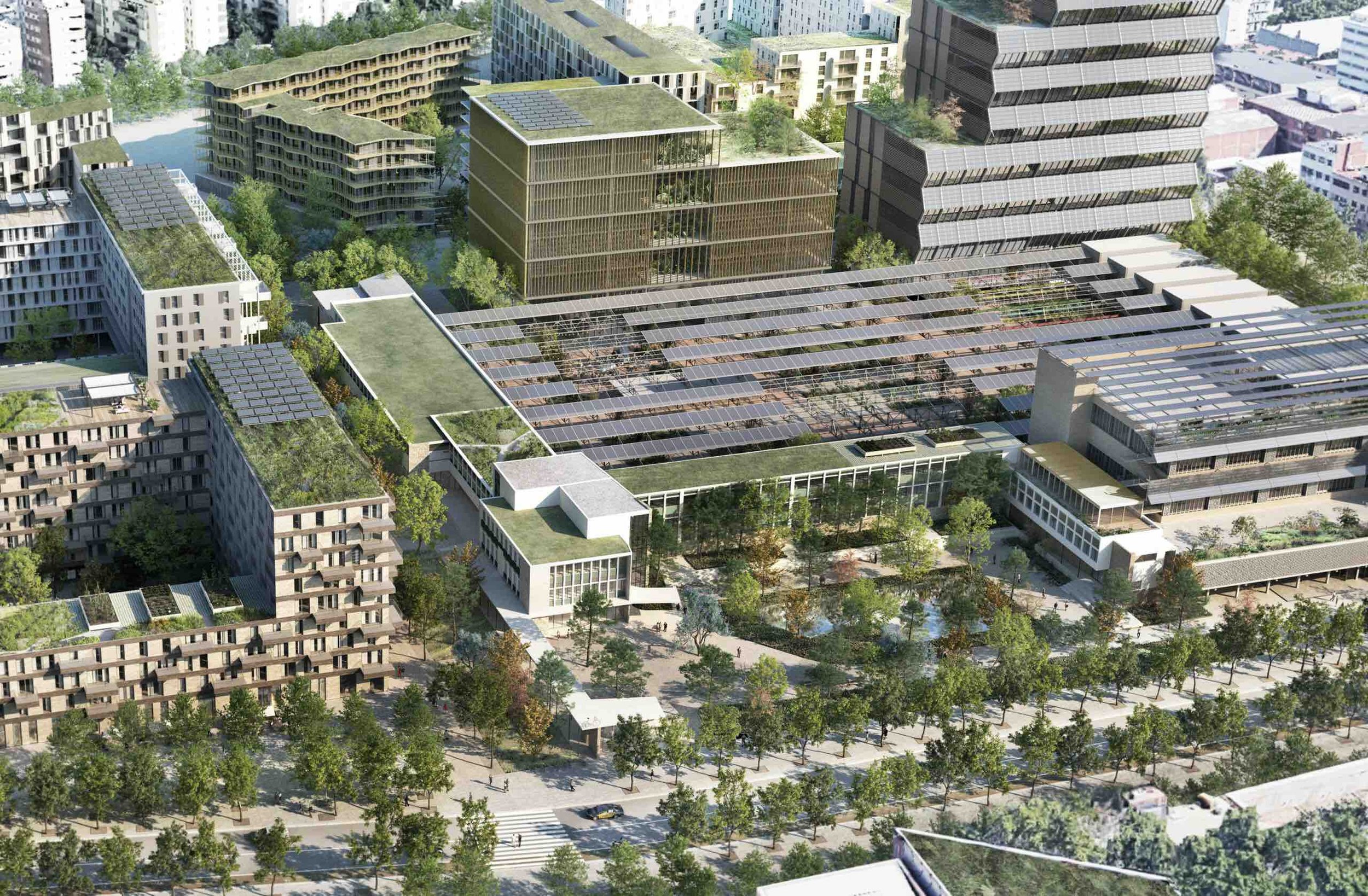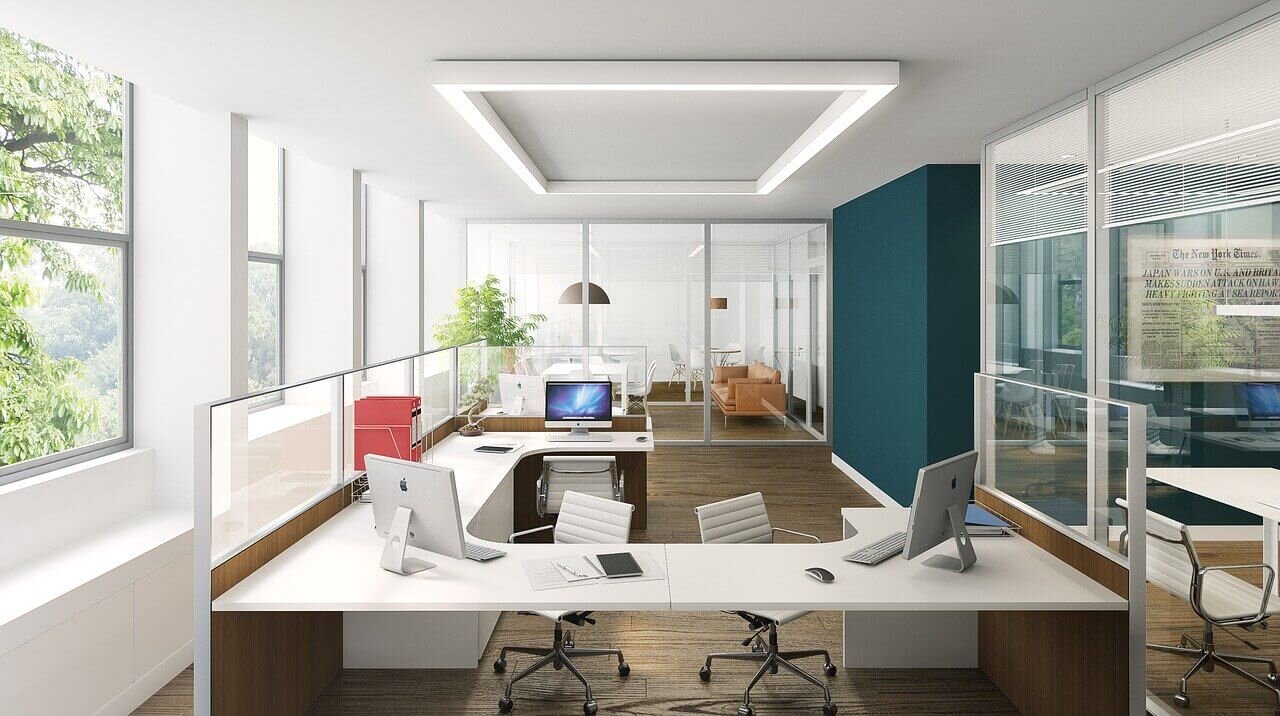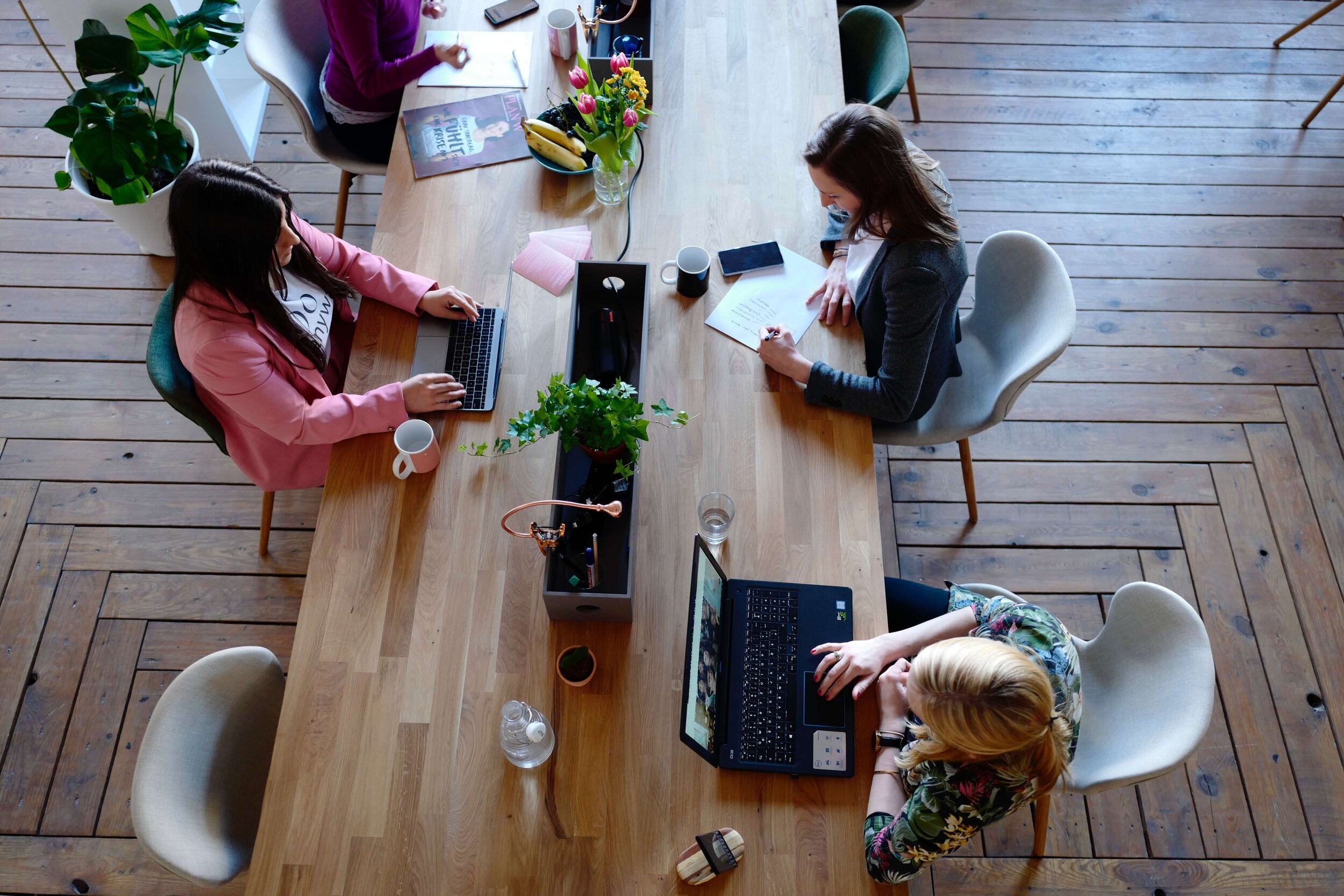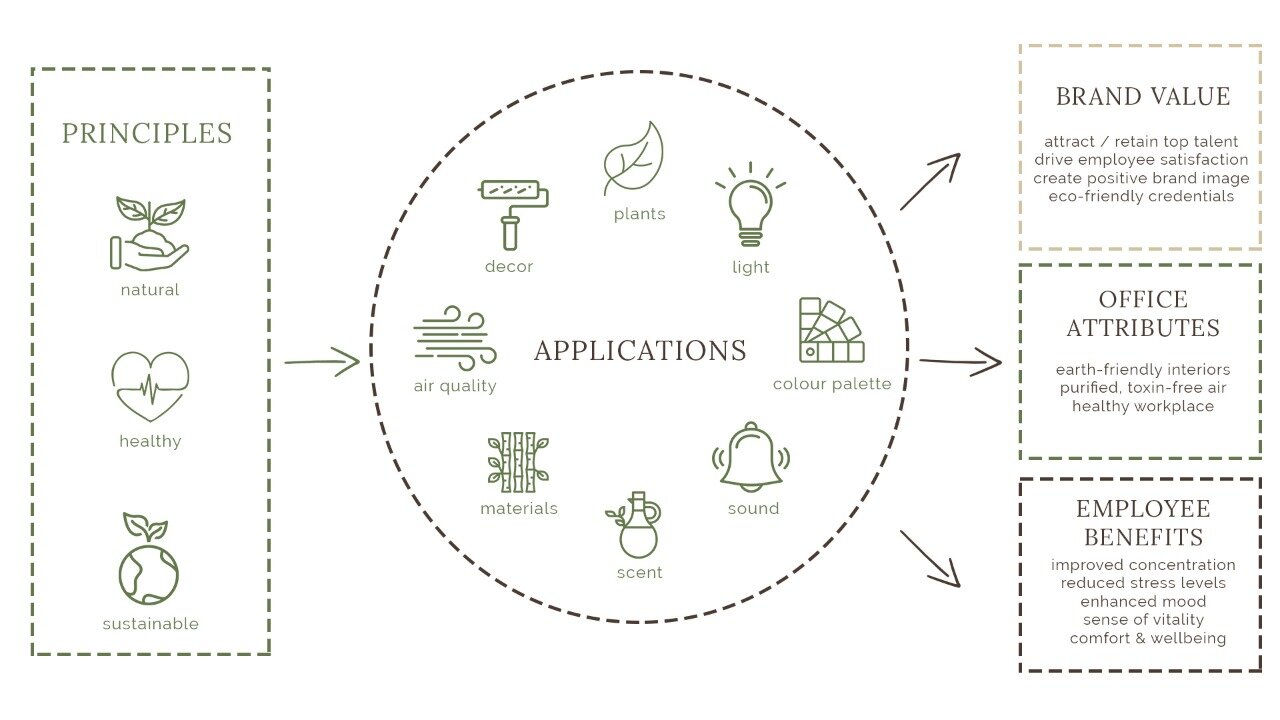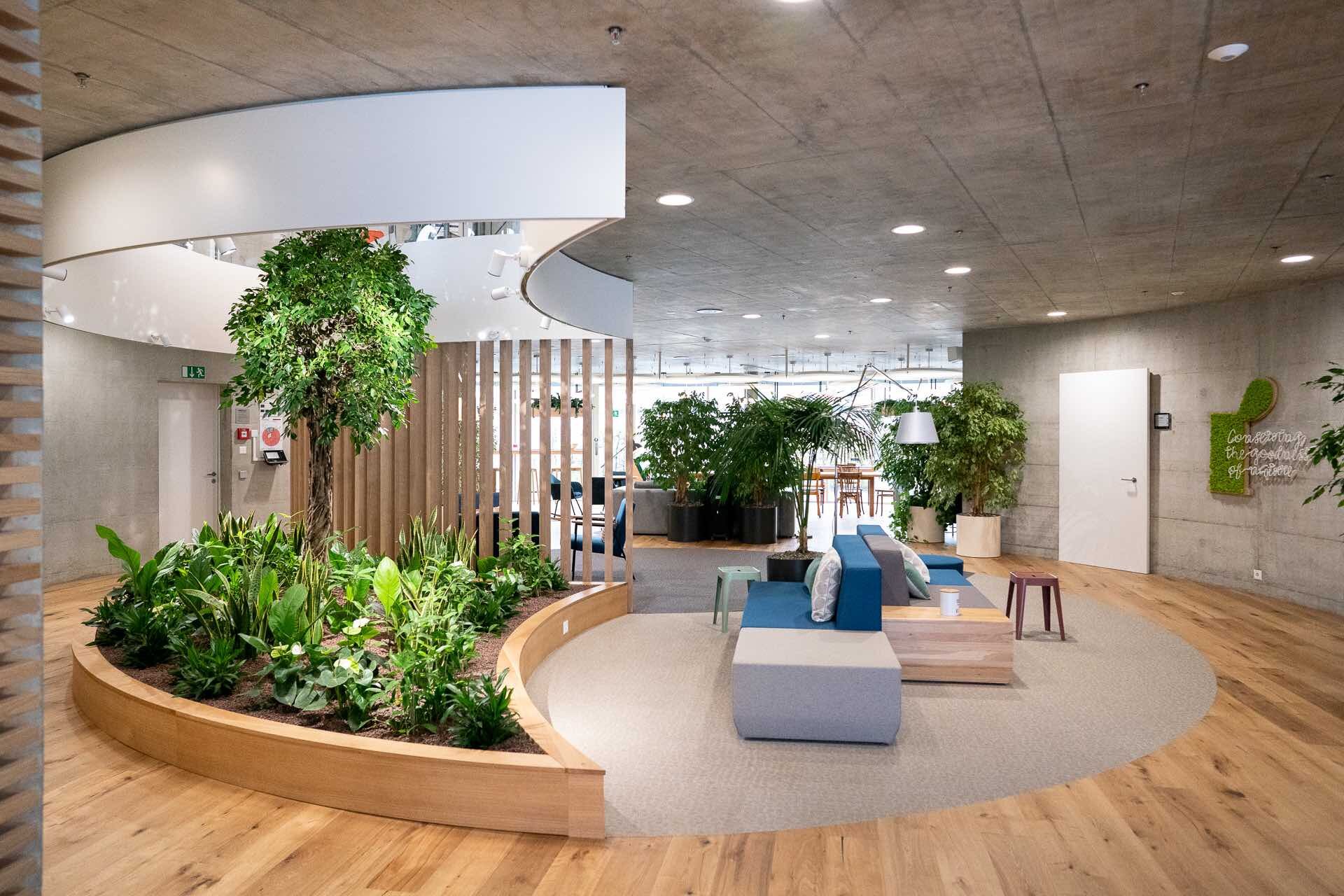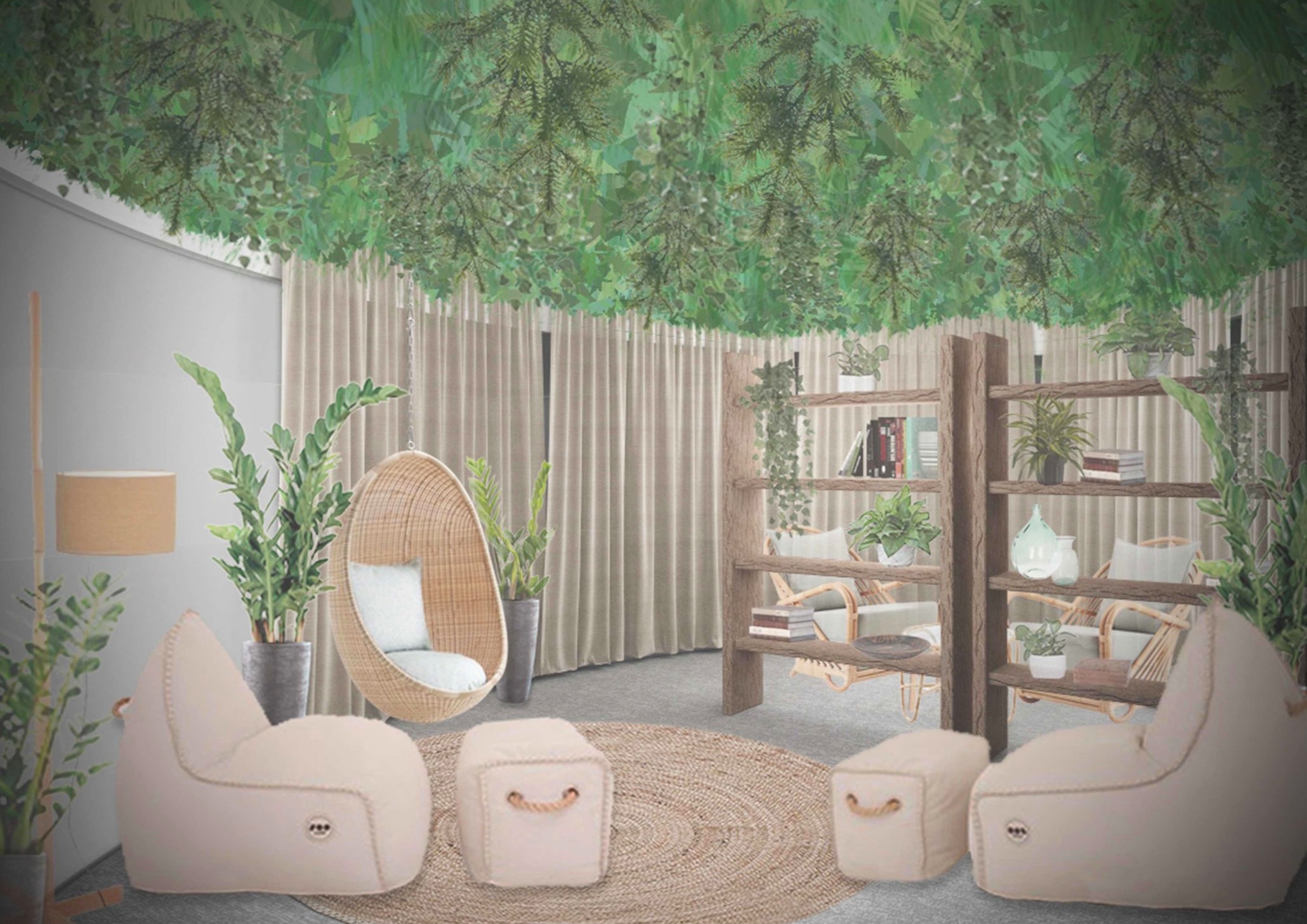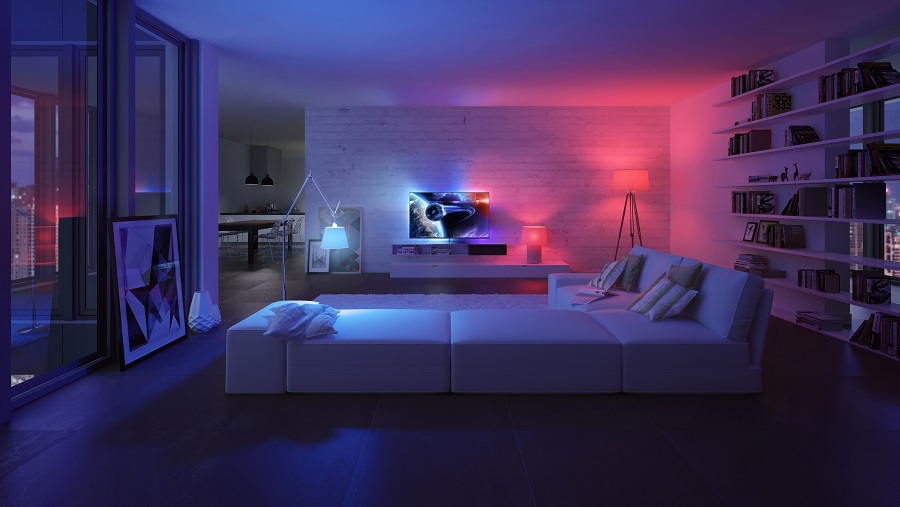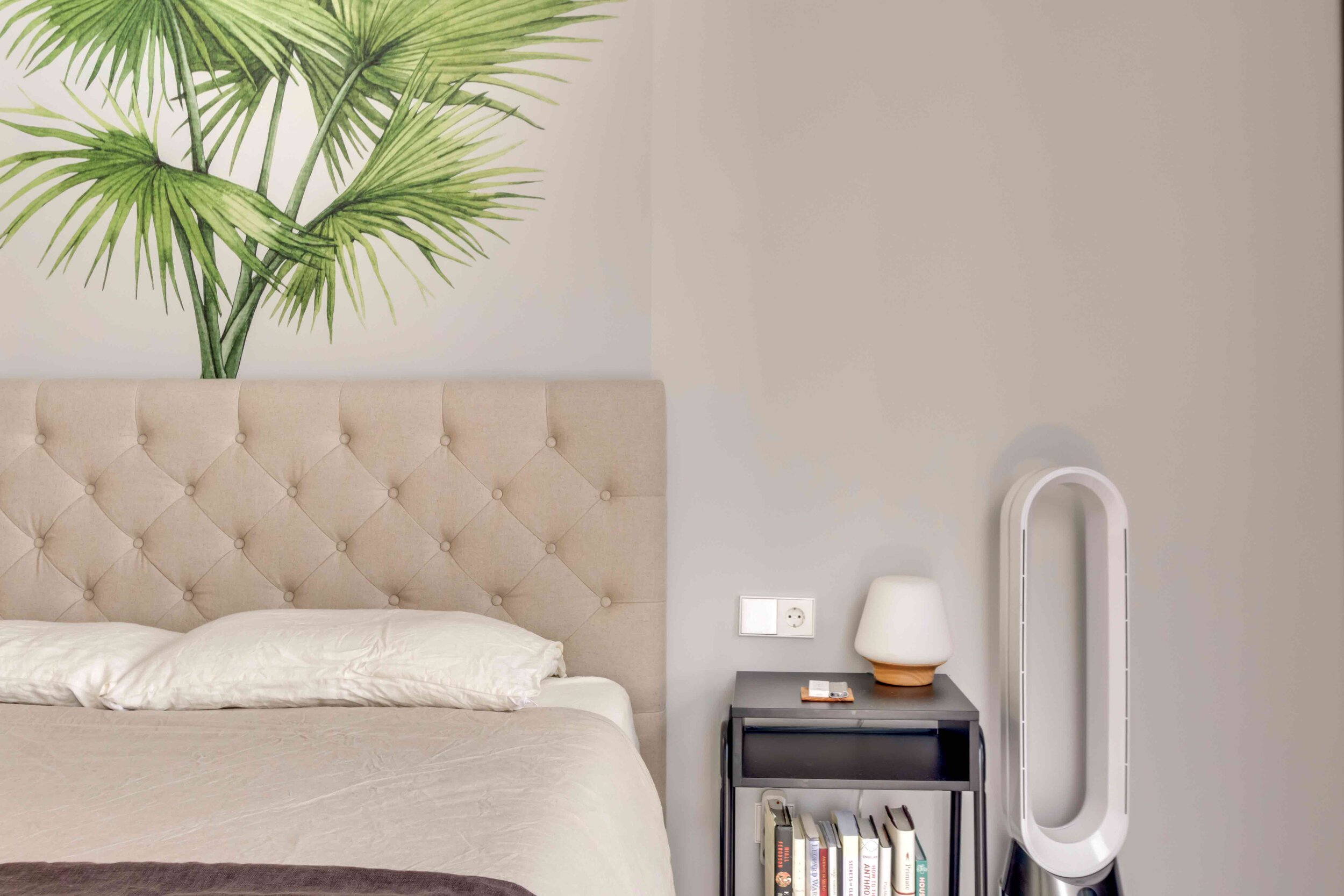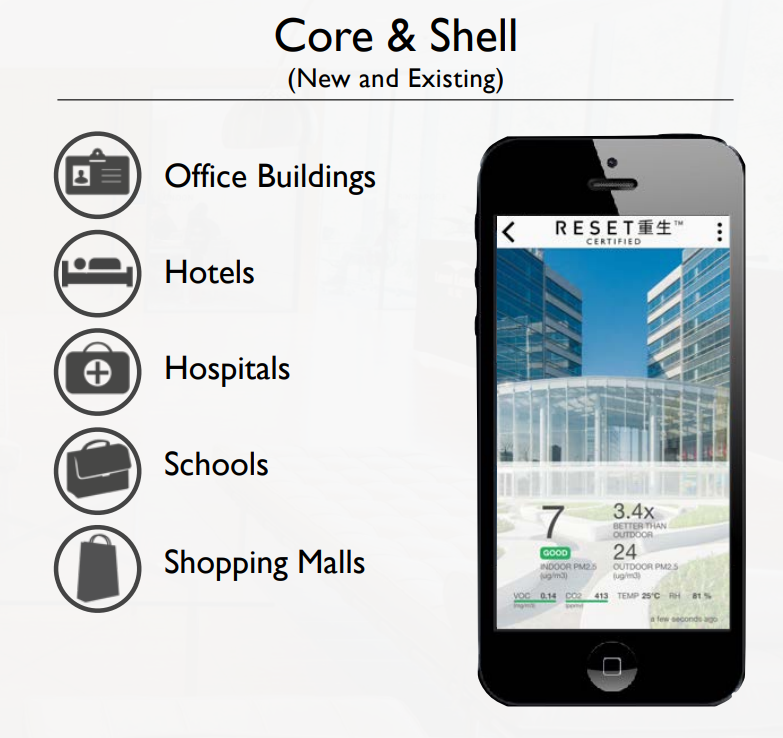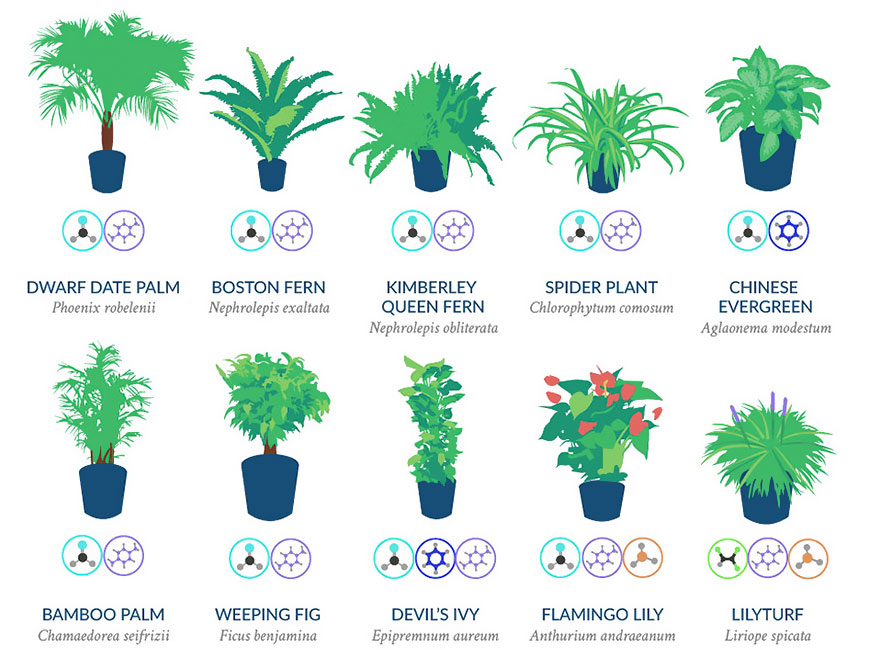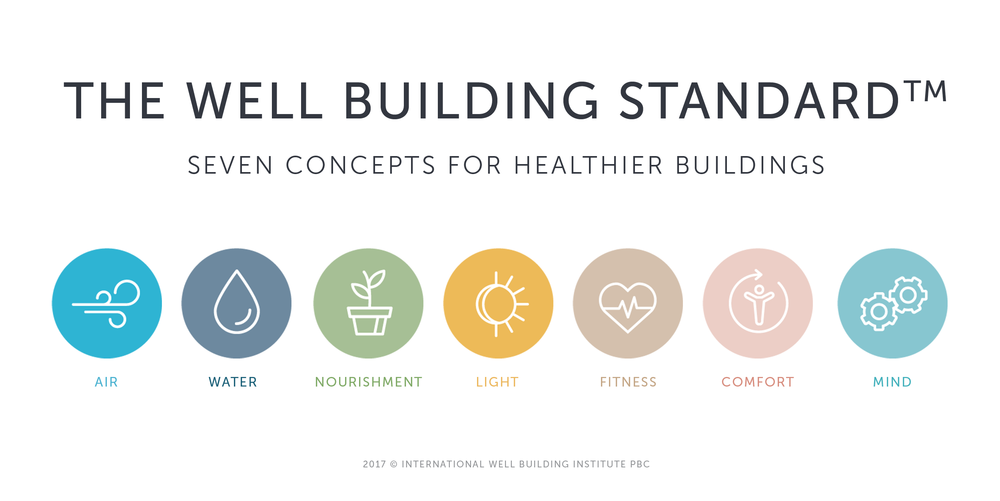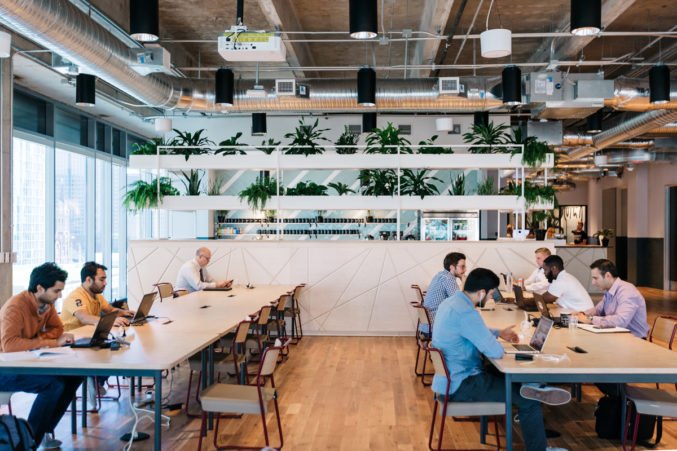Restorative Mindfulness in the Workplace
Episode 14 of our green and healthy places podcast focused on wellness and sustainability in real estate and hospitality: Leigh Chapman, Founder of Yinshi, a workplace wellness start-up focused on facilitating meditation at work.
The ‘Green & Healthy Places’ podcast explores sustainability, wellbeing and community in real estate and hospitality.
This episode is with Yinshi, a company promoting restorative mindfulness in the workplace.
The Role of Restorative Meditation in Workplace Wellness
Today I’m with Leigh Chapman, Founder of Yinshi, a workplace wellness start-up focused on facilitating meditation at work.
His business model is both hardware and software, providing physical meditation pods that can provide a safe haven for an office worker to escape to for a little quiet time, as well as a suite of services to facilitate and encourage a greater acceptance and understanding of the value meditation can bring to the workday.
We discuss the pros and cons of open-plan offices on mental health, the benefits of biophilic design, micro-napping at work, the ‘Six Whys of Meditation’, how mindfulness improves productivity and the human-centric office post-Covid.
===========
A full transcript follows courtesy of Otter.ai - apologies for any typos lost in translation!
===========
Welcome to Episode 14 of the green and Healthy Places podcast, in which we explore the themes of wellness and sustainability in real estate and hospitality. I'm your host, Matt Morley, founder of BioBlu sustainability, Biofilico wellness interiors, and Biofit nature gyms.
Today, I'm with Leigh Chapman, founder of Yinshe, a workplace wellness startup focused on facilitating meditation. at work. His business model is both hardware and software, providing physical meditation pods that offer a safe haven for an office worker to escape for a little quiet time, as well as a suite of services to facilitate and encourage greater acceptance and understanding of the value meditation can bring.
To the work day, we discussed the pros and cons of open plan offices or mental health, the benefits of biophilic design, one of my favourite topics, micro napping at work, what he calls the six Whys of meditation, and how mindfulness is linked to productivity, and his views on the human centric office post COVID. It's an interesting conversation.
He's a super bright guy, with big plans to make an impact on the workplace in London. If you like this type of content, please consider subscribing…..
So, Leigh thanks for joining us. I'm excited to talk to you today. I'm really keen to hear more about your your new business inchie. So perhaps you could give a quick intro to what you're doing and the products that you currently have on the market.
Leigh Chapman 2:05
Hi, Matt. Thank you. Yeah, thanks for thanks very much for having me. Today, really excited to talk to you. So yeah, just give you a quick, quick overview. He and she is a product service solution, all sorts of different things, which is primarily born out of the need to combat the issues that we've got stress and mental health in society in general today, which cost the UK economy up to 45 billion a year.
And obviously, that's a societal wide problem, but we look specifically workspaces and how we can improve and help contribute to better workspaces. And part of that is about the appropriate spaces or having the appropriate spaces for physical, mental health.
And in particular, we are really passionate advocates, advocates of meditation. And that comes from, from my backstory, I won't go into it too deeply. But I found meditation at a time when I was suffering from stress quite badly at work, difficult points in my life. And helped so profoundly, I can't begin to tell you hopefully, we'll get into that a little bit later.
But the problem that I had was that I couldn't find space to do it every day. And in actual fact, at the time, I was doing a type of meditation, which required you to practice twice a day.
So if you couldn't find a space to do it in the morning, then, you know, there was even harder to find a space later in the day, because offices just for most offices just aren't cut out or designed to have that type of space for mental wellness.
And I had the typical problem where I would find myself in the toilets, once a day, trying to find some kind of peace and someone in the cubicle next to me trying their best to not let me find some peace. And one day I just had a bit of a spark a light bulb, and just thought this gotta be a better way of doing this, really. So that's where the idea was born.
And we our main products are meditation pods that provide a quiet, peaceful, private, secure space for people to meditate in their own time. And we suppose we're kind of retrofitting these spaces into offices, because it would be great if they were designed in that way in the first place. And those kind of aspects of well being well thought about and integrated into the design process, they obviously starting to be which is great.
And some offices do have areas for for meditation, but not many. And actually, those areas that they do have sometimes aren't ideal because a lot of people have a self a sense of self consciousness that they can't get over and end up don't using those spaces at all. So our spaces are a little bit more private than that.
So yeah, we're kind of retrofit retrofit in these spaces in So offices really and and trying to make a meaningful contribution to people's mental health and stress levels while they're at work.
Matt Morley 5:08
Okay, so a couple of things you mentioned that I thought were worth picking up on. Clearly, the subtext to that is that the shift towards more open plan offices, one of the side effects of that has been there is effectively a limit to the number of spaces or options available to someone where they can have a private moment where they can
Yeah, just just pull away from, from the hub. And I think that's the challenge for that has become the challenge more recently around workplace wellness, and particularly around design and layout for a lot of sort of the big corporates is, is how you balance that that sort of free flowing movement, hot hot desks and what have you, but also creating enough areas of privacy. So clearly, in a way you're responding to that because there are fewer people in their own private offices now than there were, say 20 years ago, right. So in a sense, it's a response to that or a solution to that problem.
Leigh Chapman 6:09
Yeah, definitely. I think there's, there's a lot been said about open plan offices isn't the real Marmite kind of area, some people love them. Some people, some people hate them. And you're right, there's so much good about them, you know, I can talk about things like collaboration, creativity, ideas that are sparked through random encounters, that kind of stuff.
But you know, there is the flip side as well, and that they aren't good for everyone's mental health, I don't think they don't suit every type of personality. I don't know, if you listen to Bruce daisley at all. He's SVP of Twitter, in the UK, and he does a lot of stuff around working environments. And that's the company's kind of thing. Now, he's really interesting.
He came out with quite an amusing comment on one of his podcasts recently, which was open plan offices are the best way to get everyone in the company to absolutely hate each other very quickly. Because there's so many things that really wind people up about those spaces. You could be sitting next to someone and you know, you don't get any work done for an hour, because all they want to talk about is you know, what happened in, you know, the Queen's gambit last last night or something like that.
So they don't say absolutely everyone, I think there is an acknowledgment of that. Now, I think people are starting to question that. It can be really interesting to see how the workplace evolves, I think when we go back, post COVID, and all the challenges that that's obviously going to throw up. And it'll be really interesting to see how people start to re examine those a lot more when they're thinking about office design, and what's really sort of best for our productivity and mental health at the same time.
Matt Morley 7:46
So even before COVID, this was a year and a half, two years ago, I was involved in a sort of biophilic design consultancy project for a big corporate in Switzerland, just outside of Zurich. In fact, they do natural foods, and they're all in there were completely into this whole space, but they had a big big issue with the headquarter building around acoustics.
And it was it got right to the top of the tree and that the the global HR director was was really pushing hard to try and address the problems around acoustics, sound levels, background noise. And it got to the point where by you know, we needed to take sort of quite drastic measures we created with sort of acoustic panels all over the place, acoustic paints, acoustic underlays, for the carpets, all kinds of things.
And then in fact, we ended up with a what we call the wellness room, which was effectively a mini space dedicated to, to just kind of chilling out in a sense. So clearly, that's something that's that we're seeing emerging on the market.
But to describe your your pods a bit more in detail, then like, this is a space that you sort of you literally walk into and in a way cut yourself off, right, and you have that quiet moment in a dedicated space by yourself. Whereas a wellness room, you know, might be other people in there in silence or not. But then in one of your pods, it really is a sort of personal moment, right?
Leigh Chapman 9:11
Yeah, exactly. And you know, we're not saying by any means that wellness rooms are not a good idea. And they of course, are totally open for, you know, people to use those and harness them in the way that works for their mental health in the best way.
But you know, a lot of people it doesn't work. And like I said before, there's just too much of a sense of self security for them to go in there and really, properly relax and switch off. So. So our environments on our pods are designed to be a little bit more private.
They're hard to describe verbally, I'd say to anyone, probably best to go to our website. If you just Google the inchie you'll find that quite easily and you'll be able to see them. There's two two parts that we've designed The word pod one is a kind of an open circular spiral design. It's made with birch plywood, which we chose for it's kind of calming natural materials and colours, as well as it kind of feeling quite restorative as well.
And it's a biomimetic design, which is inspired by the golden ratio, which I'm sure you've heard of before, which is a really common sort of spiral pattern found throughout nature, from galaxies down to plants, and the way they kind of pattern out spiral. And enter in the pod is really a bit of a journey, I suppose we were trying to create its likes of what we wanted to do was it really feel like you were stepping out of your current environment into a different one, one that was more instantly more relaxing, and you could straightaway just feel a little bit more ease and breathe more easily.
And we supply noise cancelling headphones as well, really comfortable noise reducing headphones that come with guided meditations, as well as sleep enhancing audio, because we believe in micro napping, as well as lots of studies that, that back that up is a really useful tool as well.
Matt Morley 11:07
Yeah, I was gonna ask about that. Because it's, it's, I've seen some interesting stuff coming out around lactation pods or lactation rooms. For young mums who bring their kids to school at camp, their kids don't go to school, so they bring their kid into the with a baby into the office. And then obviously, in parallel with that yet sleeping pods or giving staff within the Office permission to have let's say, a power nap during the day. And then so in a sense, I can see how the your pods would would really fit into that.
So a lot of it then clearly is about having or sensing that there is permission to do this. Right? And so how do you how do you pitch the and obviously around sleep and the sort of the 20 to 30 minute power nap there's there's lots of research around that when you when you talk about meditation in terms of its benefits for restoring concentration levels?
Or what are the the touch points that you tend to fall back on when you're when you're talking about specifically meditation as opposed to going outside for a walk or having a coffee or, or whatever else someone might do to try and relax at some point, say mid afternoon when they have that energy dip.
Leigh Chapman 12:22
Hmm, yeah, good question. It's a bit hard to know where to start the story on this one sometimes, because you can come in at very different points in different angles. But I think everyone has probably heard this sort of anecdote about the amygdala, right, the part of our brain, which is the reptilian brain, which Yeah, kind of responsible for our fight or flight responses. And works by activating cortisol in our system for when we do need that fight or flight response.
And it was kind of designed for us to you know, fend off woolly mammoths, rather than actually deal with having 152 on opened emails in our inbox. And that's kind of what it's doing at the moment, right to us. We're working ridiculously crazy hours, a lot of us under high pressure, stressful jobs. And cortisol is just bad for us in so many different ways. You know, it's been shown to increase anxiety, depression, have physiological issues, digestive problems, headaches, heart disease, sleep problems, lots and lots of different health issues that that's attributed to.
But the good news story in all this is that we can change all that, you know, in terms of how we actually change the neuro plasticity of our brains, to rewire them to react differently to external pressures that we face on a day to day basis.
And meditation is one of the ways that you can do that. And we talk about when I actually go into companies and try and launch the part and embed meditation as a practice, we talk about the six Whys of meditation. And they are reduces stress, improves attention and creativity, the fact that it's foundational wellbeing practice, the fact that successful people are doing it, which I'll come on to a bit more in a second. The factor is great for relationships.
And also the last one, which is a little bit tongue in cheek, but you look younger, which I'll come on to, in a bit with detail in a second. The reduce stress one is kind of linked to what I just said about quarters up.
And there's there's all sorts of studies that have been shown that just one week of 20 minutes a day of meditation leads to a significantly slower response in our amygdala during meditation, which is kind of interesting in its own right, but actually, when you look up studies that went a bit further, they showed that eight weeks lead to the same effect during a baseline states and not just when you are during meditation, but slower amygdala response rate when you actually just ignore Your day to day level of consciousness.
And the second one I mentioned was about improved creativity and attention. And there's studies on that as well that show free 10 minute sessions of breath counting was enough to appreciably increase attention skills in a control group.
And then other studies around open monitoring meditation, which is kind of like body scan meditation. And that was shown to stimulate divergent thinking, which is a really key driver of creativity, which is the type of income using brainstorms and coming up to Business Solutions. The third was a foundational wellbeing practice.
So meditation didn't just help with, you know, being good in meditation in itself. And the other aspects I've mentioned already, it helps with all aspects of life, you know, you look at the different spheres of wellness, you know, it's not just kind of spiritual, emotional, psychological, but you've got physical, environmental, financial, occupational, social.
And this is one of the biggest things for me about meditation. Because it has a positive feedback, loop effects and all these different areas, you know, once you start meditating, you tend to have better decision making and better intuition. And that creates a bit of a domino effect across these different areas.
So when you're making better decisions, you start to eat more healthfully. When you're eating more healthfully, you do more exercise, you do more exercise, you sleep better, and so on, and so on. And all these areas tend to have like a compound feedback effect, which, which just gets better and better in all the different areas.
And I think this is really critical for businesses, because one of those areas is relationships. And what meditation tends to do is, just puts that slight barrier between the thought and the action sometimes so rather than getting blown around, you know, in the in the winds of your emotions and thoughts, it just gives you that extra seconds sometimes to be aware that actually, this is an emotion that I can be detached from, I can observe it, I can decide how to react to this.
And I've only wish I discovered this early on in my life and avoided some of the compensations that I've unnecessarily had at work, I think. So I think just about building better relationships and a more harmonious kind of work environment, I think it's really, really helpful.
Matt Morley 17:21
I think there's a lot in that I really do. And I've come to think of my modest meditation practice of, you know, 20 minutes a day, as really the the other side of the coin of, of an ongoing, yeah, essentially sort of therapy.
The two really do go together working on understanding your own triggers, and your own the baggage that we're all carrying around with us. I think in a way, you know, there's just so much being put out there right now around the benefits of mindfulness, the benefits of meditation, that I think there's a good, good chance you sort of ride that wave.
You mentioned Silicon Valley, and a lot of those big tech companies are are the innovators, you know, that the first on board, when it comes to biophilic design are the first on board when it comes to workplace wellness, and they're really leading the way. So no doubt, you know, it will be, it will be a very interesting pitch to be in on when you when you get in front of someone Amazon or Facebook, for example, forget your pods in there, but thinking sort of slightly more of a wider market, you know, into sort of London's corporate world of legal offices and insurers and so on, or even banking offices.
How would you How would you imagine if there were, say, a well being champion within that business, who was able to at least get you, you know, introduction in there. And then obviously, the questions start coming up around what, you know, how do we, how do we know?
How do we monitor its use? Or how do we know beyond someone sitting there all day watching to see how many people are going in or coming out? How long people spend? How could you collect some kind of data to corroborate or at least show that it's being out well adopted by by the staff on that particular floor? Or within that building?
Leigh Chapman 19:08
Yeah, it's a really crucial point, Matt, and something that I've thought about a lot from the start of this and how we bake that into into the offerings. I don't think enough companies are tracking this in terms of the wellness space.
And the industry does sort of get let down by that, I think, and some people do have a slightly sceptical view of some of the wellness offerings as a result and I think really important for internal stakeholders, obviously to have that justification and take people on the on the journey with them and have that story and, you know, data to sort of back up that yes, this is working is providing us some some return on investment and some value.
You know, when we instal the pod, we make sure it's got a booking calendar set up with it so we can tell occupancy rates and who's using it. So repeat usage. You know, we need to kind of market it or make the awareness of it more known to who who aren't using it currently. And then, you know, obviously, qualitative measures, like employee feedback are really useful as well, you know, the anecdotal measurements such as, you know, people's performance, who are using it, like self assessment in terms of their well being.
And then also, you know, we do offer to sort of help advise on more, especially larger scale testing to assess the effectiveness of it as well, which isn't always possible for some companies. But there's some amazing studies out there at the moment, you know, there was a famous one in the US by insurance company, Aiden, who showed that the introduction of a mindfulness programme led to an extra $3,000 a year in productive productivity from their, from their teams, you know, so that so there are also large scale testing programmes that you can put in place to measure that. And also be really looking at stuff like healthcare costs, you know, the reduced amount of claims that they see as a result of that this is a preventative medicine, really.
nd then you'd have reduced rates of absenteeism, presenteeism things like staff turnover. Yeah, there's all kinds of sorts of things that you can measure, it really depends how how deep they want to go. Really?
Matt Morley 21:20
Yeah, that makes sense. And to be fair, I'm putting you on the spot there. But the reality is from the, from the owner or developer, or from the corporate side, you know, clearly there is no one answer to these problems. It's a it's a case of creating a nurturing environment that fosters productivity and creativity and positive relationships.
And there is no magic bullet for that. It's about putting a number of strategies in place of which I'm fully convinced that meditation kind of should have a seat at the table, for sure. I'm just wondering, you know, clearly, we're discussing this within the context of a global pandemic, that looks like it's going to have an impact, the lasting impact on the return to work, but not just that, in terms of also, you know, how we how we use offices in future, I'm wondering how you've had to adapt your business strategy over the last year, or how you add a date how you see things over the next year, because it could well be that you get a sort of slingshot effect off the back of all of this right with an increased interest on behalf of on behalf of businesses in, in creating innovative, interesting and engaging workspaces, right, where meditation can be a part of that.
Leigh Chapman 22:36
Yeah, absolutely. And he gets it. Yeah, it's an incredibly interesting time, like you say, you know, I think there's a short term, medium term change, and then a long term change as well. I've read a blog post recently, actually, around this exact topic, actually called human centric offices.
You know, it looks undoubtable, that we're going to be going back to a sort of more hybrid approach. You know, I think the the stats have been coming out overwhelmingly in favour of that, I think there was a yougov survey recently, which showed I think, four in 10. People, you know, want to don't want to sort of carry on in the same way as it was before.
So there's some, there's some really compelling reasons for, for going back to the office, but also some compelling reasons for how we can sort of carry on all the goodness that we've got from this remote work and experience.
Because I think, you know, this, it works for more experienced sort of staff, you know, with this remote working, but we've got to remember that there's, there's a whole swathe of of people coming into work at the moment who are missing out on that sort of face to face collaboration, the relationships, you know, we spoke about, you know, being able to solve complex problems, the ease of conversation, you know, not dropping out halfway through because of bad Wi Fi, all that kind of stuff. So there's lots of good reasons for getting people back to the office.
But I think we need to kind of convince people a little bit, and certainly people who are kind of resistant to that at the moment. So I think there's a short to medium term job to do that. And part of that is making sure mental health is put as a key priority. Obviously, there's all sorts of kind of measures that we can put in place to that.
And I think there was a study done by the Prince's Trust youth index recently that showed it one in four people have been unable to cope during the pandemic. And there's obviously huge mental health issues that are going to have to be addressed.
So mental health really needs to be at the top of the agenda and enticing people back making them feel comfortable about coming back to work or the safety measures that that obviously have to be put in place as part of that are also critical. I think, looking at sort of more medium to long term. Really this idea about and it's something we've been seeing, obviously already, but I think it's only going to accelerate this idea about the office being a destination And somewhere we really kind of want to actually go into and we see some value in it and we see some some positive kind of mental health benefits from it at the same time, this idea about kind of premium eyes in the office. Similarly, I think the to sort of go hand in hand, and all the all the subjects that obviously, you know, close to your heart, like biophilic design are going to be really crucial here.
But you know, other stuff like, you know, almost like ideas, like making the office like more of a Art Gallery, you know, making it interactive, making it more experiential, making it very shareable. You know, I think there's going to be huge talent flight to companies that really get that right. And clearly, you know, we're not going to need quite as much space as we did before, in the medium to long term because of this new balance between working in the office and working at home.
So I think there's a real opportunity, and I think people are starting to really sort of cottoned on to that. And hopefully, yeah, we can, we can be part of the solution for for people that want to be involved in that as well.
Matt Morley 26:03
Another trend that you're you're nicely positioned to, to fit in with, I think is around the shift to environmental, social and governance or ESG, oriented policies at the real estate developer and an owner, landlord level.
There's, there's details in there now with the latest ESG guidelines, particularly around mental health, and the idea of there being a mental health officer, someone who's done a modest piece of training around understanding how to help someone who, if there isn't a full HR department available, at least there's someone there who's kind of the dedicated go to person that you can, you can talk to you and I think, you know, these systems, I know I've mentioned it to you offline previously around the kind of green building and healthy buildings certification systems, for sure, are a way to sense kind of encourage the industry to move in the right direction.
So that then leads me on to the idea of the green buildings and sort of the materials and you mentioned briefly how you're you're producing or the materials that you're using for the pots in terms of like the manufacturing process itself. Talk to us just briefly about how you've, you've gone about that because you're effectively it is a product you manufacturing in the UK, are you manufacturing abroad and importing like what's what's your current setup in that in that sense?
Leigh Chapman 27:34
Yeah, we UK manufacturing at the moment, it was it was tempting to go down the road of Far East or Eastern Europe, because obviously the the value is extraordinary. But we really wanted to keep our carbon footprint to a minimum. So we decided to take a bit of a hit on that and produce in UK and keep it as local as possible. In terms of the materials that we use, the main material in the pod number one is birch ply.
We chose that because it's a really fast growing species of trees, so it's relatively easy to replace. The wood wastage of plywood, during the manufacturing process is also significantly less when compared with traditional lumber practices.
And it also tends to be much more durable as well. So it tends to last longer. We use walling off or near in pod number two. And obviously that has also got some good eco sustainability creds. In fact, that veneer is a very low wastage, you know, option for for word. So yeah, there are there
Leigh Chapman 28:39
are main kind of ways that we're trying to help sustainability in terms of the materials that we that we use, but we also, you know, donate to the world land trust as well for every pot that sold. And I think generally just maybe, slightly less tangibly, but I really do passionately believe that.
Meditation helps to raise people's consciousness generally, you know, it puts more community on things like so puts more emphasis on things like community, and looking out for each other, and the world.
And I think that has to be good for sustainability as a whole, you know, you're talking about sort of creating a greener and happier planet, I think we need to create a greener and happier mind, if that can be such a thing.
And really, we're passionate about exposing more people to how meditation can can really help open their mind and be more aware of sustainability and, and the decisions that we make and how they impact everything else.
Matt Morley 29:43
Yeah, it's it's definitely, you know, very closely aligned with that the idea of the people on planet and community as you mentioned, I think that's increasingly becoming a bit more than just a buzzword.
A lot of the green building certifications are shifting in that direction now and in response to events over the last 12 months just to sort of wrap things up if you could send if there was one message if there's one piece of content that you want to get out to the corporate workplace community or to people are considering how to adapt or adjust their, their workplace environment going back in after, yeah, a year or perhaps more of working from home like what what's the what's the one thought that really is driving everything you're doing that you'd sort of put up on a billboard.
Unknown Speaker 30:32
But I mentioned an article that I recently wrote, it's on our website called human centric design, I'd urge people to go there and have a read, this is a very practical guide or my take on on what the guide is for managing that transition for us back into the workspace.
But I think if something on a billboard would maybe say, just really urge people to consider in making space for meditation in their business as the benefits are transformative. You know, your, your teams could be so much happier, more productive, resilient, creative, collaborative, cooperative, and just all around nicer to each other. And that stuff is viral, you know, it spreads and it creates economic as well as societal and psychological benefits. Okay, best of luck, man.
sustainable masterplanned community Quinta do Lago
Green & Healthy Places podcast episode 16: Quinta do Lago is a sustainably-minded, masterplanned community development in Portugal's Algarve region. This residential resort focuses on outdoor living with 2500 acres of land with only 25% can be developed on.
our ‘Green & Healthy Places’ podcast series takes a deep-dive into the role of sustainability, wellbeing and community in real estate and hospitality, for episode 16 we are with Sean Moriarty, CEO of Quinta do Lago in Portugal
A sustainable masterplanned community
Today we are in my old home of Portugal, specifically in the idyllic Algarve region in the south to talk to Sean Moriarty, CEO of Quinta do Lago, a sustainably-minded, masterplanned community development with 50 years of history behind it. The residential resort focuses on outdoor living with 2500 acres of land with only 25% can be developed on.
As well as being home to some, it’s also a tourist destination in its own right with water-efficient golf courses, boutique hotels, a sports campus, restaurants and retail as well as its own nature reserve and a white sand beach, even their own on-site farm.
GUEST / Sean Moriarty, CEO, Quinta do Lago
https://www.quintadolago.com/en/
===============
Full transcript follows, courtesy of Otter.ai (excuse typos)
Welcome to Episode 16 of the Green and Healthy Places podcast, in which we take a deep dive into the themes of wellness and sustainability in real estate and hospitality. Today, we're in my old home of Portugal, specifically in the idyllic Algarve region to the south. Talking to Sean Moriarty, CEO of Quinta de Lago, a sustainably minded, mixed use development with over 50 years of history behind it.
The residential resort focuses on outdoor living with two and a half 1000 acres of land which only 25% can be developed on, as well as being home to some. It's also a tourist destination in its own right, with golf courses, hotels, sports, campus, restaurants, and retail, as well as its own nature reserve and a white sand beach, even their own on site farm. If you like this type of content, please hit subscribe. You can find my contact details and those of the logo in the show notes. So let's get into it. Here's CEO Sean Moriarty.
Sean, thanks so much for joining me today. It's a real pleasure. There's so much we could talk about, you've got a huge project and a huge remit. Today we're going to focus on more the green, health and wellness aspects but perhaps just for those who aren't familiar with kin to the logo, just a very brief introduction to the project and its various components.
sean 1:41
Yeah, good morning. And thanks. Thank you for inviting me. It's, it's great to be joining you. So Kindred Lago is in the very south of Portugal, it's 12 minutes from from faraway airport. And we really are spoiled with nature here. It's 50 years old. Now Quinta do Lago was first founded. And it's changed a huge amount in in those 50 years. And I suppose in the last number of years, and some game changes for us was the campus. That's one of the latest inventions. We built new homes, but very much focusing on outdoor living, which is a huge part of Quinta do Lago - also safety, nature, outdoor living, a sense of community, and which was a big element of what the campus brought. So it's built on 2500 acres of land, we respect the greenbelt. So you can only build on 25% of the land. So, there's no high rising buildings, all the buildings are all built at the same height. It is an architectural dream world because they can have different styles. But it's, everything's built at the same height. Everybody's got big gardens, you know, it looks, it looks very good.
Matt Morley 3:10
So just to put that in perspective, essentially, it is a residential community, first and foremost. But then you also have the golf and you have the hotel component. So you're open to the public but you also have those who invest by and live on site for at least part of the year.
sean 3:30
Exactly. So it's residential, it is a big part of our resort here. So you've got a number of villas, mainly villas, and then you've got some condominiums which would have mixture of townhouses and apartments. So as over the last number of years, and now in particular, during COVID. We're seeing residents living down here more often, and for longer periods of time. But Quinta do Lago is open for tourism, we get a lot of passing through traffic, but it's, you know, it's from generations of all right now we're seeing some amazing things here of three generations of people that are quarantining at Quinta do Lago. So the age profile is very much changing over the last 18 months or 24 months.
Matt Morley 4:24
Getting younger?
Unknown Speaker 4:25
Younger, younger. So, you know, if you go back maybe six years ago, the average age of our real estate buyer was in the late 60s, late 60s, probably even early 70s. Now it's mid 40s for 85% for buyers.
Matt Morley 4:43
I think that's one of the things that really interests me most is just how, obviously, the project's got 50 years of history behind it, but it does seem to now just be hitting this crest of a wave right which is suddenly a turn to Healthy Living - health has become the new wealth. And it feels like you are neatly positioned to capitalize on that. But clearly, it wasn't the case, necessarily, as I understand it 50 years ago, right? So I mean are you seeing the effects of that yourself?
sean 5:15
you know, you see a lot of marketing throughout the world of trying to get in on the buzz of, you know, it's a healthy place to be and invest in your wellness and this kind of stuff. Quinta do Lago is situated on the national park, which is an amazing place, if you haven't been there, you need to take a walk or cycle along, it really is mind blowing. so Quinta has probably been saying this for a long, long time - it's the kind of environment that it is low density, you know, clean air. And now it's really become more important over the last two years, and in particular, in the past 12 months for, for the reasons that we know, but it really is top of mind, I think for people, it's top of mind for younger generations, I think schools now in most parts of the world, you're in better parts of Europe, in particular, they're really getting behind the whole sustainability piece. My nine year old can have conversations with me about sustainability that I don't fully understand, I have to admit. And that's a great, great place to be.
Matt Morley 6:33
clearly, in one sense, there's wider external factors that are turning in your direction, but how have you, as a team, strategically had to respond to what's going on around over the last two years at what it's been a case of new packages, new facilities, how have you tweaked or adapted the offer?
sean 6:53
You know, we really want to be the leaders, we want to be leaders of change. And that's been a part of our journey for the last number of years. And that's why we invested so much in our resort. Over the last eight years, nine years, we've we've invested over 70 million in just a resort in in revamping it in various different things. And, you know, during this lockdown pandemic, we said, let's now take advantage of this time, and start on our golf courses. Our golf is a huge part of our business. And we've had the number one golf course in Europe for a number of years. But, you know, it's it's no longer about having great greens and clean bunkers, you also have to have really play a huge part in the environment. And we went on a heavy audit on on the machinery we're using on our resorts, in our golf courses, in particular water pumps, and the how accurate these guys were. And it was a surprise to us, to us huge improvements to be made. So that got us then on the movement of investing in our in our golf course, in particular, we're putting in 7 million into that at the moment. But you know, one of the big results out of that is and we've completely changed the water system that we've put in, we've redesigned or got help to redesign our pumps because they weren't efficient enough. And at the end of this we're going to be using 20 to 30% less water consumption per annum, which is massive in an area like this, where water is so important in the warm weather environment. So that you know that's that's one piece with hundreds of pieces I could speak to you about including our farms and everything else...
Matt Morley 8:40
you mentioned the onsite farm and that was going to be one of my questions... Is that more of a soft marketing piece? Or is it literally a functional working farm that contributes to the restaurant?
sean 9:02
Well, to be honest with you, we had that piece of land a number of years ago and we really wanted to get into we want to evolve our restaurants quite a bit. And to buy local is very important for us to buy local is actually harder than it seems even though we've got amazing fresh markets here. You know, I think there's still quite a bit of work to do in local, which I support by the way on local governments and and food safety controls of how they can help the local food market producer and the restaurant owners to get that traceability of food product from A to B, I think there's still quite a bit of work to do not and that will be a game changer for everybody when that happens. So, you know we found it hard to get certain types of vegetables, certain types of products. So we said let's use this piece of ground and grow Our own and it started from there, it then became a wishlist for the chef's, I want this and I need this, I can't get this anywhere. And it evolved from there, then we have another couple of acres land on the road that wasn't being used. We farmed that. And we've turned it into five acres of farm now for vegetables are grown, and we've got greenhouses in it. And it's To be honest, it's only right now, in the past couple of months, two years later, that i'm really seen the impact of this, we do a lot of takeaway food now on home delivery food for customers because of lockdown, and the colors of the different vegetables, the freshness of it. It's really amazing. Now we're going to expand quite a bit, I've got some exciting things happening this year but yeah, it's not something that we're making a lot of money out of. But it's it's bringing a huge change in our footprint, of course, but also the quality of service we're providing.
Matt Morley 11:05
You mentioned, your relationship with the wider community. And obviously, we talk now about community often in the same breath as sustainability and wellness. Just wondering if there are other things that you're doing or how else you're, you're engaging with the community? Has that been a piece of your your CSR plan from the beginning?
sean 11:30
Yeah, we've we've always had a great connection with the community here with the residents and guests that come in, we've got a quite a large database. You know, there's, we've got a lot of golf club members in the campus, you know, games like paddle it brings together people together, you've got various different groups. I think what really stood out very quickly here last year, when the pandemic started off, ourselves and the rest of the residents very quickly, within one week pull together at the very beginning to raise funds for the local hospital. And I think it took nine days, and there was a half a million donated to the local hospital to get some machinery that they really needed. And that how quick that pulled together was amazing. The residents just grabbed it, lead it, I didn't have to be very much involved, and got involved a few times. And it was just completed. And I was just looking at my WhatsApp groups lately, they're still talking on it, there's still pieces going on, that showed a sense of community, you know, whereas at times, it seems it's very transient here, people plugged in very fast. I spoke to seven or eight residents this week about a new restaurant, we're opening up and bounced a few names off them to get their feedback. Funnily enough, all seven of them had different opinions, it didn't make my life any easier. But you know, we do engage quite a bit.
Matt Morley 13:18
There's that interaction then with your key stakeholders, I'm just wondering within the context of sustainability in your efforts there. Because you have been putting out a lot of content recently around your new sort of eco strategy. And there's clearly a lot of thinking that's gone into that. Is that being driven, if you like by those residential stakeholders, or is that come from above, from from sort of the boardroom level?
sean 13:50
the main driver is probably from within, you know, it wasn't pushed upon us to say you should be doing this. the basics of sustainability is a given, you know, it's frowned upon if you're still talking about how are you getting rid of plastic? Like that's, that's like in retail in the 90s when we had some great customer service people going around saying they can really train your staff to be the best trained people ever. Really, how are you going to do that? I'll train them how to say hello, please and thank you. That's a given. You know, that's the basics - if you put out a plastic straw, it's just frowned upon, it can't happen. But we really need to take it way above and beyond that, food is one of the quickest and easiest ways for people to realize that what you're doing and why we're doing it and to do it and eventually we want to have Carbon menus that you understand the carbon footprint of the food that you have on that menu. Where does it come from? And I think it's eventually that's where we'd like to get to in one or two of our locations and explain if we look, you really love figs, figs are out of season now, so I had to get them from Brazil.
Matt Morley 15:20
you mentioned the campus. And that would be perhaps another example of where you really push the boundaries. So the question begs asking, again, did that come from demand from the market? Or did you just say, you know, what, we're not going to do a standard gym, we're gonna completely raise the bar on that and set a new standard for hotel and resort residential gyms.
sean 16:20
I think to be fair, our shareholder no matter what he does, it's not going to be standard, it has to be above that. And I think that's what the demand is, if we're going to maintain this leadership role of resorts , it's expected that it's going to be above and beyond what the norm would be. And, you know, today, we really wanted it to be a game changer when it came to the log of so the campus ideally, in our mindset, when we set it out, we wanted the campus to become a flight to destination, not just Portugal to be a flight to destination. It took two years to build. Our first teams, they came from Beijing, they came from the Premiership in the UK, they traveled from all over the world , PSG, with various different teams here, football teams, and they haven't been in Quinta do Lago before, a lot of those players have never been here. So they came here because of the campus. So and that's really what we wanted to wanted to do. But the important thing about the campuses, it's built to the standard for the elite athletes. our tagline is very clear, be elite, whatever your level. And so it's open for everybody. So you can train with the elite athletes at your side, we don't close off parts of it, you know, unless there's a big football team here, and they need some privacy. We've got all the machinery, all the techniques, and the coaches that will train an elite athlete, and it's open for everybody. So for residents and guests, you know, I use it every day, and I'm elite at my level, I'm not at somebody else's level. And that's what we want it to be. You know, it's it's, it's a we're a big believer in backing the underdog.
Matt Morley 18:29
clearly, the temptation with the gym is to say, Okay, we'll put in some hardwood flooring, with the mirrors on the walls, but some lighting in perhaps a plant in the corner, and then you get Technogym in and and they just kind of do the rest, right? They just fit it out with all that the usual gear and sell you lots of strength machinery. At some point, you said, okay, no, we're gonna do it differently. Did you then have to factor in the additional revenue streams around bringing in and attracting pro teams? Because there's a gap, right? There's a big step to go from your standard investment. Or was it a bit of a leap of faith that there was just demand out there, and that if you, if you build it, they will come?
sean 19:22
You know, we were lucky enough. We met a lot of contacts. And we were able to speak to some football teams and managers and ask them, you know, of places you go to where's the best. And we didn't want to know why it was the best. It's what was missing from it. And we ended up with a list of things that was missing. And that's what we went after is those things that was missing, because the rest of it would pull together. But if you have stuff that nobody else has, that's unique selling point Right. So the pitch was the biggest, probably a big game changer and a big investment, it's 95% natural grass and the rest of it is made up, we're the only one in Europe that you can hire that pitch from. But yet, that's the pitch that PSG will play on, the pitch Man City play on in their stadium, and they, everywhere else, they were going to have their camps didn't have that pitch to train up. And that was a huge investment compared to the normal pitch that we could have put in, a huge difference. But the difference if you've got a big game coming up the Champions League game coming up, you know, you'll get your stats off the pitch of how much water you're going to have on it, what's the role of the ball going to be the distance of it, what's the bounce is going to be, we can replicate that pitch in three days. And that's that was unique. So that's clearly was a decision, the hope that that would be a hugely important week, we believe that would be important. And that was what we were gambling on. And it has turned out that it is quite important for people.
Matt Morley 21:13
So there's in some cases where you make these interventions, and you make a bet on the being demand out there for it. And other times, clearly a large part of your your strategy is just to leave nature where it is and not intervene. You mentioned the low density strategy. How do you plan ahead in terms of leaving certain amounts untouched and encouraging people to connect with nature, because clearly, there's this big shift now towards that spending more time outside in the fresh air? You've obviously got commercial demands on the one side, but then the in the same sense, at the same time protecting your future by allowing enough nature to remain untouched. So how do you how do you juggle those two?
sean 21:56
Well, you know, there's, there's a master plan in place for almost 50 years now, since the since it was founded, of protecting that amount of greenbelt. And we've never moved from that. And in fact, we're extremely strict on it. So when people are building houses, buying plots, here, there's only a limited amount of plots left. And there's a huge demand , the buildability per plot is clearly marked out. that's your maximum. And it won't budge from that. And everybody in these areas, not us, architects, municipalities, designers, they're all clear about that. That will never change, we will never be going back to redesign the master plan to say, Can we have a bit of this greenbelt back or take a bit here, take a bit there.
Matt Morley 23:01
So your role clearly then is to is to steady the ship and guide it on that path because you sort of know where you're going to some extent, but then within that, obviously, there's lots of room to, to experiment and to do what you're doing, which is to innovate and create new products and services. So looking ahead to the next one to three years down the pipeline, what do you have coming up, like, what are your next new launches that you have coming?
sean 23:27
Well, my next immediate one, which is quite exciting, and then in a lot of places that might seem like a small thing for us, it's a big piece, it's expanding, continue to expand the farm we have, but we're going to build a bee farm. And we've got a number of guys that work for us that are very qualified in this field. So they're very excited to get into a new new project and a new role. And that's, I think, gonna be exciting for us. Like I see this as every customer that comes and rents a villa from us or stays in our hotel, we'll get a jar of honey leaving and it will be another unique piece of of Quinta do logo and the Algarve. We're going to continue to evolve the outdoor living, you know, you mentioned that and the whole health and wellness piece of it we're really starting to become comfortable with that and providing a good service on that. You know, we've got good golf, we've got good tennis, we're evolving our cycling routes. Right now we've got since you were here a couple years ago we've got a new nature trails, it's linking up different beaches and you're off the sand dune. It's amazing and you can see everything that's going on around you it's it's great when the tide is in and you've got all the boards around you and flamingos there. We're very much going to push out a lot. And you know, we're it's it's a lot a lot of things now is about packages, I think people like decisions to be made for more at least to be guided into, I'll take care of it. What do you want to do? You know, if you're coming, you're going to travel for the first time. You want clean living open spaces. What kind of foods do you like? What kind of exercise do you like? Right down to we will label the shelves on your fridge that there starts shelf, that's mom's shelf. This is the baby shelf of what you've told us and what feedback you've given us and pack it and plan out your entire week if you want to de stress and relax or you want a fusion and lots of activity. And already, we're getting lots of great feedback on that. So I think we're going to continue to expand on that. We will look at d more real estate. We're just looking at plans on that at the moment. But we're looking forward to getting people back here.
Matt Morley 26:09
You got plenty going on. It's impressive stuff. So thank you very much for your time.
sean 26:13
It's been great. Thank you, Matt.
Healthy Building Certification FITWEL
A guide to healthy building certification FITWEL by an expert consultant (FITWEL Ambassador)
A Healthy building consultant guide to FITWEL certification
What is a healthy building or healthy community?
Primarily here we are dealing with factors such as indoor air quality (IAQ), visual comfort, light quality, acoustic performance, active design, thermal comfort and cleaning protocols but it can extend as far as mental wellbeing, biophilic design, physical activity opportunities and even an element of signage.
The ‘healthy building’ and ‘wellness real estate’ movement can be distinguished from its close cousin sustainable buildings and the green building movement that, as the name suggests, adopts more of a planet-oriented perspective.
Their ultimate aim is to create real estate and communities that promote mental and physical wellbeing for regular occupants. Concern for the environment is not their raison d’etre but should still be considered as in practice. many of the same concepts apply to healthy buildings and green buildings.
Why do we need healthy building certifications?
Healthy building certifications, like green building certifications, provide structure, rigour and accountability, as well as the opportunity to benchmark within the industry, measure progress and ultimately advance the cause not just through the award of certifications but also through the network of Accredited Professionals (APs) and Ambassadors and other consultants spreading the message within the industry.
We are great believers in the role healthy building certifications such as WELL and FITWEL have to play as neutral bodies promoting accountability, education and a sense of collective progress towards generally agreed healthy building goals.
What does a healthy building consultant for FITWEL do?
A FITWEL accredited professional is in fact known as a FITWEL Ambassador and can typically advise both on healthy building concepts in general as well as FITWEL certification specifically.
The key insight we wish to offer here, as healthy building consultants and a FITWEL Ambassador, is that there is a considerable amount of work to put in at the front end of any healthy building project to align the work of architects, interior designers, signage consultants, and even MEP consultants and especially Facilities Management with the requirements of the FITWEL standard.
That needs to happen first, with an eye to healthy building certification with FITWEL, only subsequently should the certification process be undertaken, as that is more about providing evidence, data and hard proof that certain decisions have already been taken and measures implemented in the building.
We recommend this way of working rather than attempting the two simultaneously, effectively a healthy building consultant role as well as a FITWEL Ambassador role managing the assessment application online. The timescales for the former are far large than for the latter.
For example, implementing active design strategies in office stairwells requires an understanding not just of the concept of active design but also a series of work phases, from budget allocation to creative concepts (possibly having undergone an RFP process with design agencies), detailed design, sign-off, implementation and snagging. This could realistically be three months from start to finish and it is just one small piece of a far wider project so plan ahead, get your consultants lined up early on and you will end up saving money in the long-run!
What does the FITWEL Standard cover?
The 55+ design and operations strategies in this particular healthy building standard are intended to improve occupant health and productivity.
Its scope is arguably more limited than the WELL standard that takes a far wider view of a similar brief but for this same reason FITWEL can be an easier pill to swallow, requiring less CAPEX. It is considerably less demanding than the WELL standard overall as it has a more limited scope, albeit with many of its components align with the WELL standard.
If we take a workplace as our example in this instance, include: Location, Building Access, Outdoor Spaces, Entrances & the Ground Floor experience, Stairwells, Indoor Environments, Workspaces, Shared Spaces, Water Supply, Food Services, Vending machines / snack bars, and Emergency Procedures.
What else do you need to know about FITWEL?
There are three scores on offer, 1-star, 2-stars and 3-stars with categories covering multi-family residential real estate, retail, commercial interior, single tenant building, multi-tenant base building, senior housing and community.
The seven FITWEL health impact categories are as follows:
Impacts Surrounding Community Health
Reduces Morbidity and Absenteeism
Supports Social Equity for Vulnerable Populations
Instills Feelings of Well-Being
Enhances Access to Healthy Foods
Promotes Occupant Safety
Increases Physical Activity
Contact us to discuss your FITWEL Ambassador or healthy building consultant project requirements, we are here to help!
well building movement V02 ergonomic workstation design
a WELL consultant’s insight into ergonomic workstation design for the WELL building certification Movement V02
a consultant’s insight into ergonomic workstation design for the WELL building certification Movement V02
What is the WELL Building Standard?
The WELL Certification process for WELL V2 is now widely established as the leading healthy building and wellness real estate standard in the world today. It is essentially a series of guidelines backed by rigorous scientific research, that when taken together, will guide a real estate project, whether new build construction or refurbishment and fit-out, towards a final product that is aligned with human health and wellness.
Sections of the V2 standard are dedicated to Air, Water, Nourishment, Light, Movement, Thermal Comfort, Sound, Materials, Mind, Community & Innovation.
What is WELL consulting?
A WELL AP or WELL consultant is there to assist a project team through the certification process, ensuring maximum points are scored along the way by offering expert advice not just on how to lock-in points but also the principles that lie behind them. As a result, the project has every chance of becoming a model of health and wellness in the built environment.
Additionally, a WELL consultant’s skill set might include wellness interior design, biophilic design, knowledge in healthy buildings and consideration for sustainability / green buildings, a WELL building’s close cousin, as well as expertise in health and fitness, or as WELL like to call it ‘Physical Activity’, ‘Movement’ and ‘Nourishment’.
What feature of a healthy building does Precondition V02 focus on?
Projects here need to show that they have provided ergonomic workstation furniture to all users of the building as well as practical guidance to ensure the furniture is used to maximum effect. Why does this matter? Get this one wrong and a workplace will likely suffer increases in absenteeism and a reduction in worker productivity.
In blue collar jobs especially there are physical risks at play whenever there is a manual component, such as lifting or loading whilst in white collar workplaces extended periods spent hunched over a screen and a keyboard can, if not positioned correctly, equally lead to pain and injury.
There is no one size fits all response to this but in general ergonomics in the workplace are designed to encourage movement during the day while avoiding awkward, uncomfortable positions. Adjustable furniture plays a large part in resolving the issue but education and knowledge sharing has also been deemed crucial by the WELL Certification.
For details on ROI to show to the ever vigilant company CFO, see here.
For a separate article we have written about ergonomic furniture in workplaces designed for worker wellbeing see here.
part 1: Visual ergonomics in WELL standard V02
WELL are looking for adjustable desktop monitors that avoid neck pain, you’ll need monitors arms or specific adjustable stands for this one. Laptops should also have an external keyboard and mouse to allow for more of an upright stance, additionally a stand for the laptop will prevent the head tilting down at an awkward angle and shoulders hunching forward. We want office workers to sit straight and or stand tall whenever possible to save their backs!
part 2: height adjustable work surfaces in well standard V02
A quarter of all workstations need to be height adjustable so that workers can sit or stand at will, whether it be manual or electric adjustment. Additionally, desk extensions can be included if a dedicated sit-stand desk is not an option, for example due to budget restrictions. We have written in more detail about this subject here in relation to WELL feature V07 Active Furnishings. For example, the photo above shows the standing desk set-up in Casa Biofilico, using a standard home office desk with an adjustable extension placed on top of it.
part 3: adjustable office chairs for WELL standard V02
Most new office chairs will come equipped with some form of adjustment options, in our experience providing office furniture for a luxury coworking office interiors project, spending a little extra brings additional ergonomic benefits from a workplace wellness perspective, and the office workers in question will thank you for it eventually!
WELL have some specific criteria here that your WELL Consultant would need to check with the office furniture supplier prior to making an order. If you are looking for options, we recommend ACTIU, a Spanish brand that specialises in workplace wellness furniture solutions.
part 4: provide support at standing stations for well standard v02
For anyone who is a regular user of a standing desk, it soon becomes clear that some additional support is needed to make this a comfortable experience after the first hour or two standing. WELL specify anti-fatigue mats, recessed toe space, a footrest and or a leaning chair. Only once you have spent a day working like this will you truly understand how important these small details are to the whole active furnishings debate! We usually work with a brand like FULLY for these smaller details.
part 5: provide workspace orientation for well standard v02
This one is an easy win, simply ask your WELL consultant or HR department to arrange in-person training or a video education session on the importance of ergonomics, demonstrating how to get the best out of the chosen office furniture and other resources for further reading on the subject.
To discuss how we can help you create a healthy workplace or healthy building project with WELL certification, contact us here.
well building standard movement V01 active buildings & communities
A consultants response to the well building standard feature: movement V01 Active buildings & communities
a consultants response to the well building standard’s movement V01 Active buildings & communities
What is the WELL Building Standard?
The WELL Certification process for WELL V2 is now widely established as the leading healthy building and wellness real estate standard in the world today. It is essentially a series of guidelines backed by rigorous scientific research, that when taken together, will guide a real estate project, whether new build construction or refurbishment and fit-out, towards a final product that is aligned with human health and wellness.
Sections of the V2 standard are dedicated to Air, Water, Nourishment, Light, Movement, Thermal Comfort, Sound, Materials, Mind, Community & Innovation.
What is WELL consulting?
A WELL AP or WELL consultant is there to assist a project team through the certification process, ensuring maximum points are scored along the way by offering expert advice not just on how to lock-in points but also the principles that lie behind them. As a result, the project has every chance of becoming a model of health and wellness in the built environment.
Additionally, a WELL consultant’s skill set might include wellness interior design, biophilic design, knowledge in healthy buildings and consideration for sustainability / green buildings, a WELL building’s close cousin, as well as expertise in health and fitness, or as WELL like to call it ‘Physical Activity’, ‘Movement’ and ‘Nourishment’.
What is the intent of WELL Precondition / Feature V01 / Active Buildings & Communities?
Fundamentally this is about promoting movement and physical activity in all its guises within the context of the built environment, specifically as a way to reduce sedentary behavior in the workplace thanks to targeted design interventions, a.k.a ‘active design’.
inactivity is a health problem because it can lead to chronic diseases and premature mortality, that may sound like hyperbole but many people spend 8hrs or more in their office five days a week and will have a career that spans decades. That’s potentially a lot of inactivity!
The answer to this lies in promoting active design in our healthy buildings, this may be by encouraging greater use of stairwells rather than an elevator, cycling into work rather than driving, engaging in a group physical activity class during the working week with office colleagues, using a standing desk to reduce lower back pain, and so on.
How to design active buildings & communities for this WELL feature
In this Precondition WELL are looking for projects to achieve at least one point from V03: Circulation Network, V04: Facilities for Active Occupants. V05: Site Planning and Selection and V08: Physical Activity Spaces and Equipment.
This makes the Precondition highly achievable in our opinion but remember that the aim with WELL is never just to scrape through with the minimal investment of time and energy possible but rather to look for synergies between features and, where possible, creative solutions to their requirements that have a positive impact on occupant health.
V03: See here for our WELL AP expert opinion on the active design / stairwell strategies in Movement Feature V03
V04: We have written here on Facilities for Active Occupants, effectively these are bike storage, showers and changing facilities on site in adequate numbers to accommodate building users.
V05: See here for our insights into Site Planning & Selection feature in the WELL healthy building standard.
V08: We have previously written (here) in some detail about this WELL feature on Physical Activity Spaces and Gym Equipment as specialists in this particular field of gym design and gym equipment procurement.
To enquire about our services as WELL consultants, wellness real estate and healthy building experts, email us here.
healthy materials & plant-based leather
organic materials that do no harm to the planet offer a viable alternative to the environmental harm caused by leather tanning, and some, such as Dessertex made of cactus, can even be used for furniture
healthy materials such as plant-based leather are ideal for wellness interiors and better for the planet too
We advise HR departments and project teams on healthy materials for real estate development and workplace interiors. One recent discovery is Deserttex made of cactus plants..
Healthy materials for healthy interiors
A number of innovative products and materials now exist in the marketplace that promise to contribute to a wellness interior, be it in a home, office or hotel bedroom. This is an evolution of a previous shift towards sustainable, natural materials - now we have a human-centric component as well as the material being planet-friendly.
The Covid crisis has only served to bring all of this into the public's attention as there is now a far greater appreciation of hygiene and the concept of Indoor Air Quality (IAQ) nowadays, especially with the rise of the Well Building Standard and other healthy building certification systems.
Healthy materials - an alternative to leather in cactus plants
Desserto positions itself as a plant-based alternative to leather, leveraging its positive environmental impact and comparing that with the damage done to the planet both directly and indirectly by the leather tanning industry. So how does the end product, cactus leather, stand up to scrutiny?
Soft to the touch yet durable and hard-wearing, this cruelty-free fabric has no toxic chemicals, phthalates or PVC, it is semi biodegradable and well suited to the fashion, luxury goods and - of most interest for our wellness interior projects - furniture sectors.
wellness interiors and plant-based materials
The primary issue with the leather industry is chromium-tanning, the dominant form of leather tanning that sadly makes use of a nasty mix of chromium salts.
Cactus on the other hand is known for its CO2 sequestering capacity, it absorbs CO2 whilst in the ground and Desserto only harvest mature leaves every 6-8 months, meaning multiple harvests from the same USDA certified organic plants grown in Mexico.
Interestingly, half of their harvest is for food production while the other half is destined to become plant-based leather.
material durability for application in furniture
Where a leather alternative is required, such as when a client has a particular vegan / cruelty-free philosophy for example, many interior designers might reach for the synthetic PU leather sample pack but in doing so they are immediately introducing the risk of off-gases and toxins, whilst also guaranteeing a product that will regrade steadily over time.
The Desserto cactus leather has no formaldehyde or toxins yet remains hard-wearing and durable, low maintenance and easy to clean with a damp cloth. Even in high-use commercial spaces such as a hotel lobby or workplace lounge area, the cactus leather remains suitable for furniture applications whilst boosting a project’s environmental credentials and doing no harm to the planet.
Sustainable luxury material Deserttex
Deserttex is the group’s high-end sustainable luxury furnishing material that has already been applied with success to the automotive industry. Here we see scope for integrating it into luxury workplace interiors as well as green yacht interiors for example. Again, the same fundamental principles apply, the cactus plant requires almost no irrigation and no herbicides or pesticides are used while it is growing in the fields in Mexico
To enquire about out advisory services contact us here
Active Stairs: Well Building Standard Movement V03 — Biofilico Wellness Interiors
A consultant’s response to the WELL Building Standard Feature: Movement V03 / Circulation Network looking at how to create dynamic stairwells that encourage movement 'snacks' by regular occupants of the healthy building
A consultant's response to the WELL Building Standard Feature: Movement V03 / Circulation Network and Active Design Principles
What is the WELL Building Standard?
The WELL Certification process for WELL V2 is now widely established as the leading healthy building and wellness real estate standard in the world today. It is essentially a series of guidelines backed by rigorous scientific research, including active design principles and active design strategies, that when taken together, will guide a real estate project, whether new build construction or refurbishment and fit-out, towards a final product that is aligned with human health and wellness.
Sections of the V2 standard are dedicated to Air, Water, Nourishment, Light, Movement, Thermal Comfort, Sound, Materials, Mind, Community & Innovation.
What is WELL consulting?
A WELL AP or WELL consultant is there to assist a project team through the certification process, ensuring maximum points are scored along the way by offering expert advice not just on how to lock-in points but also the principles that lie behind them. Building owners play a crucial role in promoting physical activity through active design strategies. As a result, the project has every chance of becoming a model of health and wellness in the built environment.
Additionally, a WELL consultant’s skill set might include wellness interior design, knowledge in healthy buildings and consideration for sustainability / green buildings, a WELL building’s close cousin, as well as expertise in health and fitness, or as WELL like to call it ‘Physical Activity‘, ‘Movement‘ and ‘Nourishment’.
What healthy building issue is WELL Feature Movement V03 addressing to encourage physical activity?
In this feature of the WELL building certification we are dealing with, wait for it… staircases! As consultants specialising in the field of wellness real estate, we admit to getting quite excited about stairwells as they represent an often neglected corner of an office or residential building that in a sense has physical activity built into it, however far too often they are not decorated with anything beyond whitewash and basic directional signage.
A healthy building needs to switch its priorities to make the stairwells a feature that regular occupants want to use, even enjoy using. To do that, WELL encourages projects to think about aesthetics, visibility and signage prompts.
The underlying problem is, once again, physical inactivity and sedentary lifestyles. The solution is more movement during the work day and that means, amongst other things such as physical activity spaces and physical activity opportunities), climbing stairs more often and designing spaces that encourage physical activity.
Where did this WELL movement feature draw its inspiration?
The researchers went looking for ‘active design’ case studies from airports, healthcare facilities, universities and offices, all leading them to the conclusion that an enhanced stairwell experience combined with subtle but effective prompts nearby in the form of permanent signage, all have a tangible impact on overall movement and activity levels in the workplace. The concept of 'active living' and 'promoting physical activity' through architectural principles and urban design also served as inspiration for these strategies.
What do we mean by ‘enhanced aesthetics' in this WELL healthy building feature?
For us, this is about being creative with a minimal budget. The reality is that projects are unlikely to apply huge budget per floor, imagine a 10 story building for example, even at a 3,000 euro budget per floor that still adds up to 30,000 euro in total just for active design stairwells. So how do we recommend using what minimal budget is on offer?
Options include flooring, wall decor, lighting, plats or biophilia in general, music speakers even artworks or motivation vinyls on the walls. It’s about making the stairwells bright, visually pleasant and dynamic areas rather than cold, heartless corners of the building. Incorporating visually appealing stairs and feature stairs can significantly enhance the aesthetic appeal and promote physical activity.
Artworks need not be originals, prints will do here. Wall decor can be blocks of brightly coloured organic / low-VOC paint, or large format vinyls. Flooring needs to be extremely hard wearing for obvious reasons but it could be brightly coloured, or have a biophilia, nature-inspired pattern such as the one in our concept design above for a corporate headquarters with a healthy building objective in Switzerland. Bright and or coloured LED lighting can also bring life to a dark stairwell with no natural light.
If the option is available, a WELL AP should lobby the master-planners and architects on a new build construction project to position stairwells in a location that makes them visible and easily accessible to all regular building occupants. It’s all about an active design approach, placing stairs not as a Plan B but as a preferred option, or Plan A,… within reason!
WELL / movement V03 / Part 1: Design Visually Appealing Stairs (1 point)
There is no limit to how far this creativity can be pushed clearly but in terms of securing a point for this WELL healthy building feature, the certification standard is looking for at****least one staircase with a minimum of two****features from the list below on each floor. Central stairs and those in educational and auditorium spaces are prime examples of where these design elements can be applied:
Music
Artwork
Light levels of at least 215 lux when in use
Windows or skylights that provide access to daylight
Natural design elements (e.g., plants, water features, images of nature)
Gamification
WELL / movement V03 / part 2: signage prompts (1 point)
This is where a WELL AP and consultant team need to align with the signage consultants, or indeed take ownership of this element of the overall signage plan whilst integrating the design and production with the rest of the project's signage style.
At least on staircase servicing all floors needs point-of-decision signage near the main entrance or reception desk , at the elevator or escalators, and at the base / entry points of the stairs. The objective here is to grab the attention of building users just before they commit to taking the elevator or escalator instead of taking the stairs.
We want to nudge them in the direction of the stairs, this could be done in a very simple, neutral tone or indeed with something more playful that challenges the users to ‘burn some extra calories while you work', or ‘hit those quads and hams', as long the messaging is positive, not negative.
Finally, additional wayfinding signage may be required if the stairs are not visible from the location of the signage prompts, to ensure users do not get lost and change their mind!
WELL / movement V03 / part 3: promote visible stairs for improved employee health (1 point)
As a WELL consultant, we find this to can be a challenging point to win, as it requires at least one staircase servicing all floors that is open to regular occupants of the healthy building and located before elevators or escalators.
Why is this a challenge? Quite simply because we are rubbing up against the requirements or the building engineers and architects, so ‘active design’ requirements often have to take a back seat. Additionally, considerations such as building codes and mental health must be factored into the design of visible stairs. That said, the point is there for the taking if the project’s stairs happens to fit within these requirements.
If you are interested in our services helping you create active design stairwells on your real estate project for WELL Movement V03,contact us here.
wellness flooring & paints in interior design
Examples of healthy flooring, wellness flooring & non-VOC, non-toxic wall paints in interior design
Examples of healthy materials for flooring, wall paint and curtains to create a wellness interior concept
What role does flooring play in a healthy interior?
Flooring is one of the key product categories in this healthy interior trend, for obvious reasons. Western cultures, unlike say Russia or Japan, typically have less strict social rules around wearing outdoor shoes indoors, meaning dirt and bacteria from the streets have an easier time making their way into a residential carpet for example.
For more on this subject see our dedicated page here.
Air-purifying carpets?
The Desso Airmaster carpet tile by US giant Tarkett is a perfect example of what is happening in the commercial office market today in terms of air-purifying flooring. Why office interiors and not say gym flooring, hotel flooring or yacht interiors you may well ask?
Offices are primarily places of work, staff are first and foremost there to be productive and staffing costs are invariably a business's largest overhead, therefore anything that can move the needle of productivity, even if by just 3-5% for example, represents a tangible value-add for corporations, well worth a corporate HQ carpet upgrade in other words!
Sustainability first, health benefits second
Importantly, the Airmaster is first and foremost a sustainably made product with a highly respectable Cradle to Cradle certification and an EcoBase backing as standard. In terms of its functional benefits to users, it captures and retains fine dust particles, in some tests proving to be up to 20 times more effective than smooth flooring solutions. This makes it especially relevant for allergy sufferers.
Finally, it has low Volatile Organic Compound (VOC) emission properties with minimal PM10 particles - despite the name 'organic', VOCs are the bad guys as they are mildly toxic. Taken together, this makes the Desso Airmaster a viable contender for a yacht refit carpet option.
Toxin-free flooring
Milliken's Breathe range of flooring is GreenGuard certified for its low chemical emissions, made of natural or recycled fibres from plastic bottles and has a plant-based water repellency component that is fluorine-free.
Milliken have ensured that the carpet is completely VOC-free. We'd love to see the Breathe range deployed in a yacht interior for just these reasons.
Anti-bacterial & eco-friendly floors or walls
Active Surfaces by the Iris Ceramica Group in Italy go perhaps one step further with their ceramic porcelain wall or flooring tiles that come packed with anti-bacterial, anti-viral, anti-pollution and anti-odour properties.
To achieve this, natural or artificial (e.g. LED) light and humidity present in the air contribute to eliminating 99.99% of bacteria and contagious viruses that settle on the tiles.
What's more, these ceramic tiles are 100% recyclable and most are produced with more than 40% recycled content in zero emission factories. The tiles are certified by ISO 10678, ISO 27447 and ISO 27448.
Indoor paints with air-purifying qualities
Healthy wall paints are another high-growth sector we have our eye on, with brands such as Gush from Singapore bringing out a product called Cair that actively attacks airborne pollutants with catalytic reactions that break down VOCs such as formaldehyde and odours into harmless by-products such as H20 and O2.
It is anti-moulding, making it suitable for bathrooms or spa rooms, as well as anti-bacterial - in other words it eliminates 99.9% of infection-causing bacteria such as E. Coli, according to Gair.
Gush focus on a purely residential market with an at present limited product range while, closer to home here in Europe, Airlite from Italy have more products on the market already and offer indoor, outdoor and primer solutions, giving them more of an in-road into the architectural and industrial paint sectors.
Again here, the paint claims anti-bacterial, anti-mould and anti-odour properties. Airlite products are also non-toxin, VOC-free, some have air cleaning properties and are produced using 100% renewable energy.
Healthy materials for curtains
Swiss company HeiQ has produced a curtain fabric that IKEA has bought for wide-spread distribution throughout its network under the product name 'Gunrid'. The HeiQ Fresh AIR is a mineral-based technology uses transmitted ultraviolet (UVA) light from the sun to convert VOCs into harmless CO2 and O2, just like the Gush Cair mentioned above.
contact us to discuss your interior consultancy requirements
Healthy materials in sustainable interiors
We use healthy materials in our wellness interiors to balance sustainable interior design concepts with concerns for indoor air quality, biophilia, aesthetics and durability.
What are healthy materials vs sustainable materials? How can buildings and interiors integrate circular materials to reduce environmental impact?
We advise teams on the selection of materials for real estate development and interiors projects, typically as part of a wider sustainability plan or ESG strategy for example. Contact us to find out more.
What are healthy materials?
A number of innovative products and materials now exist in the marketplace that promise added wellness benefits, be it in a home, office or hotel. This is in a sense an evolution of a previous shift towards sustainable, natural materials.
The Covid crisis has only served to bring all of this into the mainstream public's attention as there is now a far greater appreciation of hygiene and the concept of Indoor Air Quality (IAQ) nowadays, especially with the rise of the Well Building Standard.
sustainable interior flooring Zandur
Our podcast conversation with Robert McKee, the dynamic founder of Zandur sustainable flooring based in Virginia, USA that supplies hospitals, offices, gyms and residential spaces around the world.
The ‘Green & Healthy Places’ podcast series takes a deep-dive into the role of sustainability, wellbeing and community in real estate and hospitality.
Here we discuss sustainable interior flooring with Robert McKee of Zandur in the USA.
Sustainable interiors & healthy flooring material
Welcome to episode 15 of the Green & Healthy Places podcast in which we discuss sustainability and wellness in real estate and hospitality. This episode we’re with Robert McKee, the dynamic founder of Zandur sustainable flooring based in Virginia, USA that supplies hospitals, offices, gyms and residential spaces around the world.
Designing a healthy indoor environment
Flooring plays a fundamental part in creating a healthy indoor environment, particularly indoor air quality, now more than ever designers and architects need to be thinking about cleaning and hygiene, which is where Zandur comes in…
Robert talks us through the world of healthy product certifications, the many benefits of using cork as a raw material, why you do NOT want natural rubber in your floor covering but rather vulcanized rubber, the life cycle of flooring and the role of maintenance over a possible 30 years, as well as Zandur’s innovative approach to design that draws inspiration from craftsmen of the early 1900’s.
If you like this type of content please consider subscribing and you can of course find Zandur USA or a local distributor at zandur.com
GUEST: ROBERT MCKEE / Founder, Zandur / www.zandur.com
HOST: MATT MORLEY / www.biofilico. com / www.biofit.io / www.bioblu.org
——————————-
A full transcription follows, courtesy of Otter.ai:
Matt Morley
Welcome to Episode 15 of the Green and Healthy Places podcast, in which we discuss sustainability and wellness in real estate and hospitality. I'm your host, Matt Morley, founder of BioBlu sustainability, Biofilico wellness interiors and Biofit nature gyms.
This episode, we're with Robert McKee, the dynamic founder of Zandur sustainable flooring based in Virginia, USA, supplying hospitals, offices, gyms, and residential spaces around the world. Flooring plays a fundamental part in creating a healthy indoor environment, particularly as it relates to indoor air quality. Now more than ever, designers and architects are thinking about cleaning and hygiene, which is right in Sandur's ballpark.
Robert talks us through the world of healthy product certifications, the many benefits of using cork as a raw material, why you do not want natural rubber in your floor covering but rather vulcanised rubber, the lifecycle of flooring and the role of maintenance over what can be 30 years, as well as Zandur's really innovative approach to design that draws on inspiration often from craftsmen in the early 1900s. If you like this type of content, please consider subscribing. And you can of course find Zandur and the local distributors listed on their website zandur.com
—————————-
Robert, thank you so much for joining us today. You founded the company back in 2004. Could you give us quick introduction to what Zandur flooring looks like today as a business, your products and, so on?
Robert McKee
Well, sure, and I appreciate it, thank you for taking the time to speak with me. A little bit about the company, we did start in 2004. The objective from the beginning has always been to focus on sustainable commercial products, the floor covering portion of construction and really with a focus of not selling something sustainable products that really perform or outperformed other products in the industry that weren't necessarily sustainable, and also meeting those same price points.
Our interest has never been to profit off of sustainability. It's always just to be sustainable. Because it's the right thing to do. And my family history goes back into the cork industry - cork flooring in fact. Sustainability was not something that people even talked about, you know, back in my grandfather's era. But it's always been something that we have had in our product line. And everything we've sold has had that sustainability story before it became popular. So it's something we just continue with.
Matt Morley
I think that really comes through in your current communications online that it is a fundamental piece of what you do rather than an afterthought that you've sort of tacked on at the end. It looks like you've built the business around that philosophy or that it's just it's just part of how you see the world, I think that there is a clear difference now in companies that really have a deep value system behind them like yours and that was very much the initial insight that led me to contacting you. I came across you primarily from the sport and fitness flooring and cork flooring, but you do others you do commercial flooring as well. Right?
Robert McKee
Correct. So basically just getting back real quick to what what you've mentioned and kind of where we come from, there's a lot of temptation always for companies to go out and sell products just to sell products, for instance, you know, we have plenty of opportunities to go and sell vinyl based products, things of that nature. And it's something from the beginning we've always made the point of focusing on sustainability. We're not going to enter into having non-sustainable products, competing with the big guys, yes they do have their sustainable lines but also their non sustainable lines. And to me it kind of defeats the whole purpose, either we're all in on sustainability or we're not.
But getting back to the products that we have. The first flagship product is something that we introduced way back when, it's a product made of cork and rubber combined. We've just recently made some significant improvements to that, it has great cleanability, which is obviously really important these days, chemical resistance, slip resistance, all those sorts of things. Then we have our solid rubber product, which is kind of the go-to heavy duty type of floor covering product for hospitals, airports, things of that nature. And then we have our solid cork flooring product, which has certain applications in commercial use, as well as a lot of residential use as well.
Matt Morley
So then, from an architect or an interior designer or design and build team perspective, how do they select one of these different materials and what that sort of pros and cons do they each have? I know you big on healthy product declaration certifications, right? The idea of a Declare label, from the the International Living future Institute and the Red List.
Robert McKee
So we've always been completely transparent about our products. Again, it goes back to the history of my family being involved in this business. It's just kind of how we're wired. And you can see that we participate in is these transparency programmes. The challenge is the cost for a small company, which can be a certain barrier to entry, whether intentional or not, so we try to pick and choose what's going to be most important, what's really going to tell the story about our product to the clients because ultimately, that's what we're trying to do - easily convey the sustainability story of our product in a completely honest way. That's what everyone else is looking for too. It gets pretty challenging, I think both on the supply side, and the specifications side, for people to really understand even what they're looking at. And I find that with designers or architects that have been doing this for a long time, even they get confused sometimes.
Matt Morley
Yeah, I think we end up we were looking for a quick and reliable route through in terms of digesting that information. And often Yeah, I can declare label or a cradle to cradle certificate, it's just but you know, once that's there, because of the integrity behind those systems, when a when a product comes out with that you can just rely on it. 100% I think that's they're going to be increasingly important. I think as, as the green building systems above start to require those individual product, green building products to align with their systems, because then you sort of you need everything to join up quite a bit like a Tetris puzzle. One of the things I wanted to ask you about was, and it's a big theme right now, for obvious reasons - indoor air quality.
Robert McKee
In a basic sense, floor covering can have a negative effect on air quality. What you're looking for, in the floor covering itself as a material would be something that has a neutral effect - that has no negative effect on air quality. However, if you look at certain types of floor covering, if you look at soft surfaces, how cleanable are they because that's when you can start to obviously have a negative effect on air quality. So it's not necessarily the material itself. But it is what can get into the material. You know, dirt, dust, all those sorts of things that you know allergens, things of that nature, which can can be contained in the floor covering itself. Then as I said specifically in soft surfaces. Now if you get into products, PVC products, things of that nature, certainly off gassing is something that is is important to pay attention to. And, again, it's something that, you know, in the formulation of our products, we make sure that there is nothing that is going to cause any unsafe off gassing of any chemicals, allergens. And it's always been one of those things that I've liked about pork in general, as a raw material is that it has a completely neutral effect on environments as far as there's no off gassing with cork, there's no negative implications whatsoever. On the residential side, it's something that oftentimes has been used in the past for people that have certain allergies, and then we can talk about the cleanability of a product. If you look at a solid surface of rubber flooring versus let's say, recycled rubber flooring or something like that, the cleanability level of a solid balkanized surface is extremely important to indoor air quality and just health in general - it is a very cleanable surface.
Matt Morley
That's an interesting one, because that comes up a lot with with my gym designs, where I'll often I'll see these terms banded around quite loosely like eco rubber flooring tiles, and vulcanised rubber tiles. What's the difference there? Is all rubber sustainable? Or is eco rubber more sustainable than recycled rubber? Can you help us unpick those?
Robert McKee
So yeah, this is one of the challenges that a company like ours fights against. Because there's been so much marketing that's not necessarily straightforward. All rubber is vulcanised as vulcanization is the process of curing the rubber through heat and pressure but then you have what a lot of people refer to as recycled rubber flooring, or crumb rubber flooring. And then there is vulcanised rubber flooring. The reason we call it vulcanised is that it is a completely sealed. The vulcanization is the last process in the manufacturing of our material. So it leaves a completely sealed impenetrable surface. If you look at recycled rubber flooring, the rubber chips are vulcanised. But the last process in fact, is actually they grind up those chips, then they put typically a urethane glue with them, and then they cure them. So it's not the final process of recycled rubber flooring, or crumb rubber is not vulcanization, it's actually just glueing those chips back together. And that's why as a result, you end up with a surface that has a lot of pores in it and holes in it, you have to put finishes on top of that. You have off gassing because you have you know some of those components being the recycled rubber sometimes or not. Not great. You don't know what the contents are.
Matt Morley
Then one of your big innovations was combining rubber with cork in flooring. So how does that how does that process work? How do you blend or combine the two into one solid substance for your floors.
Robert McKee
So I can't claim to be the the ultimate inventor of that product that was actually invented way back in the early 1900s. It's a product that I discovered probably 15 or so years ago. It was not being produced. It was not being used. And I thought it was a phenomenal idea to take basically all the great properties of cork - sustainability, great acoustical properties, great comfort properties, and mix those properties with the those of rubber - phenomenal durability, a lot of options for colour too. And as a result, we've Over time develop this product, which takes the best of both worlds.
Matt Morley
When I think of cork, I guess, I think of Spain, Portugal. What about rubber? Where are you sourcing that element from?
Robert McKee
So floor covering in general, is not made from natural rubber. In fact, you really don't want natural rubber in your floorcovering for a variety of reasons. And this is one of the misconceptions that we don't go out and sell that are products made with natural rubber, because it's not. The reason you don't want natural rubber in your product is because you have a very strong odour from natural rubber, which most people have smelled from erasers or whatever the case may be. That odour is from a protein that is active in natural rubber, and can also cause allergies as well. Latex allergies - that's from natural rubber. So you certainly don't want that in the healthcare situation. natural rubber has very inconsistent colouring. So colour consistency is difficult, which is obviously important for design. It also has very poor ageing characteristics. If you've seen a dry, rotted tire in the past on a bike, or something like that, that's from natural rubber. So long and short of it is natural rubber is one of the coolest raw materials out there. But it's not great for using in floorcovering. So what we use, we'll use a small amount of natural rubber, which will add some slip resistance characteristics, things of that nature, but the bulk of rubber is a byproduct of the petroleum industry. Basically, it's a waste that's generated, which we can thankfully use to generate, you know, this resin that has these great properties. And the nice thing about rubber is that it's easily recyclable into a variety of different things after its use. And, you know, it's does not have bad chemical properties, anything of that nature.
Matt Morley
We're seeing more and more attention paid to this concept of circularity, right. So where does your flooring go in 10 years time, or however long a lifecycle of your flooring might be? And then is it safely recycled after that?
Robert McKee
So with lifecycle there's two things that I always look at which is, how long is the product going to last and how much energy has to be put into that product while it is in service meaning what is your maintenance regime going to be. If you have to be constantly painting a finish to keep it looking clean... And you know, we talked about the recycled rubber flooring and that's one of those things maybe the life cycle life time of the floor is similar but the amount of energy that has to be put into maintain that with all the finishes which have to be manufactured which have off gassing as they're applied you know your labour cost there is far more than the material ever will be. As we continue to develop our products and in general with with solid vulcanised rubber flooring, it's a fairly low maintenance product and you know it's it's, it's great for for that you know not having to use finishes not having to use waxes, things of that nature. But getting back to the actual life span of the product. It's it will last for decades. You know if you if you want rubber to last for 30 years, as long as you maintain it properly. It's gonna last that long now the colours will probably fall out of fashion in that period of time. So what can you do with it? Well, you can do a couple things. Number one, you can instal floor on top of it. And the nice thing about rubber, particularly our cork rubber is it has phenomenal acoustical properties. So if you instal something on top of it, you're going to get the benefit of the existing floor covering for the acoustical reasons. Or it can be removed and it can be recycled in the recycling process for that is basically grinding it back up into chips, and we use chips or rubber in our product, to make different different patterns and designs, things of that nature. In fact, all of our factory waste, we use that same process, we grind up the waste, and then we use that as colour chips in our top layer or the back end.
Matt Morley
You mentioned how there's obviously to a degree, certain colours or or looks that might be popular for a number of years, are there any constraints that you come across in terms of balancing aesthetics with your sustainable values?
Robert McKee
Well, so by by nature, I guess I would say I'm more of the designer slash Innovator of products, and I really enjoy the challenges of coming up with different things with new things 90% of which never get out of my lab. But that's kind of the fun of it. And with cork there are huge challenges. There are challenges and how the raw material reacts once it's installed, if people have used style cork flooring in the past, for instance, a lot of people have had issues with it, for dimensional stability reasons, things of that nature, which we've overcome through a variety of different innovations, but also with colours. You know, people want colours, and with cork, you've got brown, brown, and brown, those are your those are your colours. So how do you take those and make changes and you know, through the baking process, we get different tones of brown from basically a light tan to a black, and then go back and start to mix those things used to you know, traditional woodworking techniques to to laminate things together, do cross cuts, re laminate them and really come up with some pretty neat patterns. And you know, a lot of a lot of my development and innovation comes from looking at what was done in the past and going through archives of factories and looking at the materials they made back in the early 1900s and finding some really cool things and kind of bringing things back out. And that's what we did with work flooring was was literally going through, you know, the basements of a factory that we worked with and finding some things that they did in the past and, and bringing those those patterns back out with a modern twist.
Matt Morley
It's it's, it's funny, isn't it, but in so many different aspects of our lives Now it can feel like in a way, rediscovering how things were done, not prior to the Industrial Revolution, but certainly plus or minus 100 years ago or more. There was just a simplicity to how certain things were done back then. And I think there's this appreciation now for for that slightly more natural touch, and I wasn't expecting it to come from you, but I get totally on it, which is just great to see.
Robert McKee
I've always thought we tend to as a society overcomplicate so many things when a lot of times you just stop look back and see what was done in the past and you know you can put put technology apply technology to something that was done but uh you know, you can really really learn some pretty cool things from from past history, which is maybe you've been buried but not not gone forever.
Matt Morley
Okay, so let's let's look at gym design because it's one of my favourite subjects. You've got three sustainable gym flooring ranges - sustain sport, flexsport, and praxis cork, what are the sort of pros and cons or how would would someone go about deciding which might be more applicable? If it's a big bodybuilding gym, you might suggest one material versus if it's a group class Fitness Studio, you might suggest a different material?
Robert McKee
There's two very distinct groups of products, I would say. One would be the Praxis solid cork. And then the other would be the sustain cork rubber or the flex solid rubber. The solid cork product is a great material for light fitness areas where you're doing a lot of floor exercises, yoga studios, things of that nature, that that product has been very well received. You know, anytime you're on the floor doing those exercises, having a product like cork, which is a very good insulator, it's going to feel warm to the touch versus if you put have a vinyl type of a product things that something like that. There's no insulation, so you're going to get the cool temperature of the typically the concrete slab that's underneath of that so cork is really nice for that obviously has great resilience to it, great acoustical properties, cork is not something that you're going to want to put in a place where you're using heavy free weights, it it is not going to resist that type of abuse. So it certainly has its place. And as I said, I would say like fitness areas where gym users are not going to be dropping heavy loads on them, that works. Then you get into the rubber products, the sustain is kind of my go to product for fitness flooring Because it has the 65% cork in it, it has tremendous acoustical properties, it has tremendous sustainability properties, great slip resistance. It has phenomenal durability, the list goes on and on, exciting about these the sustain, and also the flex product is we now have all of our products. In those two lines, all colours are available in two different thicknesses for the sports range being six millimetre or nine millimetre thickness. And what we do is we actually laminate the top layer to a recycled rubber backing, which now we're bringing in more recycled content. The nice thing about the recycled rubber backing is this on the backside so we don't have to worry about the content of that recycled rubber, which is a concern what's on the top side. And it produces a once again a great acoustical and product that's that's, you know it's going to protect yourself for when you're dropping weights, things of that nature. Navigating to heavy, heavy free weights, you can actually instal underlayment underneath of our products, so you can build up to told me 12 millimetres thick, even thicker than that 15 millimetres people have done. But it's also a good idea if you're if you're gonna be dropping heavy things to put a good drop off mat on Because ultimately, the biggest concern with heavy weights is damage to the sub floor not necessarily to the flooring material. So that's something you have to pay attention to. Yeah, I
Matt Morley
often certainly in the sort of my plans run laying out a gym floor, for example, go with the cork underneath, but then or the cork rubber underneath. And then in the strength area, especially now with sort of the trend for sort of CrossFit type stuff where Yeah, they tend to pick up a barbell and not necessarily put it down too delicately having a nice big thick, sort of extra layer, if you like to sitting on top of the of the base layer around that strength, that strength zone within the gym seems that seems to take care of it. So what have you got what's coming up? What's in the pipeline, it sounds like you're you're moving at 100 miles an hour and you've got your full of ideas. I'm guessing you've got more innovations coming what's what's in the future, if you can give us a sense of that? Well, we
Robert McKee
do it we've got a really a product that I'm really excited about coming out at some point in time this year. COVID has not helped us or anyone else as far as advancing innovation particularly. But it's a it's a it's a product made out of solid rubber. It's a roll product, which will be that will be available in titles and roles has more of a terrazzo type of look to it. Much more subtle colour, tone on tone type of a situation with the design of it and a bunch of new colours. A lot more exciting things about it as well, which will be coming out with some point time.
Matt Morley
Very cool. Well listen, I'm a huge fan. It's been it's been great to get some pick up on some of your energy and ideas that I saw I appreciate that zando.com will will link in the in the show notes in terms of someone contacting you, is it better to go via their headquarters in the US? I know you then have sort of local distributors or representatives in each country.
Robert McKee
Yeah, if you look at our website, you can you can email us directly through that and someone will get back to you with their local salesperson or we also list our different international sales people as well.
WELL Building Standard Movement V05 Site Planning & Selection
A consultant’s interpretation of the WELL Building Standard feature: Movement V05 Site Planning & Selection
A WELL consultant responds to WELL Building Standard feature: Movement V05 Site Planning & Selection
What is the WELL Building Standard?
The WELL Certification process for WELL V2 is now widely established as the leading healthy building and wellness real estate standard in the world today. It is essentially a series of guidelines backed by rigorous scientific research, that when taken together, will guide a real estate project, whether new build construction or refurbishment and fit-out, towards a final product that is aligned with human health and wellness.
Sections of the V2 standard are dedicated to Air, Water, Nourishment, Light, Movement, Thermal Comfort, Sound, Materials, Mind, Community & Innovation.
What is WELL consulting?
A WELL AP or WELL consultant is there to assist a project team through the certification process, ensuring maximum points are scored along the way by offering expert advice not just on how to lock-in points but also the principles that lie behind them. As a result, the project has every chance of becoming a model of health and wellness in the built environment.
Additionally, a WELL consultant’s skill set might include wellness interior design, biophilic design, knowledge in healthy buildings and consideration for sustainability / green buildings, a WELL building’s close cousin, as well as expertise in health and fitness, or as WELL like to call it ‘Physical Activity’, ‘Movement’ and ‘Nourishment’.
What is the main focus of this WELL healthy building feature?
This feature is very similar to some of the features in green building standards such as BREEAM and the USGBC LEED that consider site selection as one of the very earliest decisions for any project to ensure that the result is a piece of real estate in tune with people and planet.
Specifically then, WELL are looking for evidence that the area around the project promotes walkability and has access to public transportation. Read on to discover what that means in practice… there are no fewer than four points on offer here within the WELL certified process after all!
What problem is this healthy building feature addressing?
The WELL Standard make the point that contemporary real estate has a tendency to make our lives easier, more comfortable, less strenuous physically - unlike healthy buildings. This contributes to the worrying dominance of largely sedentary lifestyles in the developed world today.
To combat that this WELL feature looks to raise awareness around active design strategies in interiors but also, just as importantly, to a project’s location and its relationship with physical activity opportunities.
How does site planning connect with physical activity?
Their basic premise here is that thoughtful site planning can improve community health; walkable neighborhoods tend to align proximity, with connectivity, density, safety and aesthetics. They take into account a wide variety of different user profiles, promoting mobility for all.
Even tall buildings cna have a genuine impact on the community through its ground-level architectural choices, by adding public walkways, landscaping and so on that encourage walkability and nature interaction.
Prioritising pedestrians for a healthy community (2 points)
Part 1: STREETS: Projects need to provide at least one building entrance that links to a pedestrian walkway as well as one of a variety of technical considerations such as its WalkScore, vehicle traffic restrictions and the presence of continuous sidewalks. In other words, pedestrians need to be treated with respect, indeed encouraged in the streets surrounding the project. We can imagine this being especially problematic in some US cities where the car tends to dominate the streets still.
Part 2: ENVIRONMENT: Exterior building walls need to include some combination of transparent glazing, overhangs, murals, biophilic design and mixed design features to give the overall impression of a building designed to be aesthetically pleasing for pedestrians in the area.
Access to mass transport (2 points)
For an extra two points, this WELL feature requires that all spaces are located within an area with a specific Transit Score, in vicinity to a bus network and in walking distance to a bus rapid transit stop, rail station or ferry service.
This is to ensure that public transport can be the primary way for regular building occupants to travel to and from the site, if they are not cycling or jogging in.
This is to reduce car usage, which in turn lowers greenhouse gas emissions and lowers our collective impact on the environment, whilst also requiring less car park spaces in urban hubs.
To discuss our consultancy services as WELL Healthy Building experts, contact us here
esg real estate consultancy in london, UK
we have an ongoing real estate ESG consultancy role for Black Mountain Partners real estate development fund in London, currently reimagining 68 King William Street.
we have an ongoing real estate ESG advisory role with Black Mountain Partners in London, UK
boutique real estate ESG consultants in London, UK
we create strategic sustainability plans for a business and help deliver those objectives on an ongoing basis.
Examples of our real estate ESG consultancy deliverables for Black Mountain Partners in London, UK
Alignment with the UN Sustainable Development Goals
Evidence of aligning the business with UN Sustainable Development goals, specifically three were elected as targets where most impact can be made:
3/ Good Health & Wellbeing
11/ Sustainable Cities & Communities
13/ Climate Action
An ESG-led development strategy
Evidence of the company having adopted the systems thinking strategies of the Circular Economy and Cradle to Cradle in the initial selection of its Developments and subsequently in their design, delivery and ongoing operation, right through to re-purposing or demolition later in the building’s life.
Employee Satisfaction Survey
We carried out an employee satisfaction survey in July 2020, using these outputs to identified a number of key themes to target for employee engagement over the coming year, then attached an action to each of them and scheduled follow-up 1-on-1 sessions with the CEO for a later date. Key themes included office acoustics, indoor air quality, biophilia and plants, nutrition in the office kitchen and active ergonomics.
Creation of a Company-wide Environmental Policy
We wrote an overview of the company’s approach to systems thinking, demolition works, materials selection, in-built flexibility, lifecycle strategy, sustainable site selection as well as location & transportation objectives as they relate to green building.
Social Enterprise Partnerships & Community Outreach Plan
We implemented a comprehensive series of social enterprise partnerships as part of a community outreach program, many of these changes also have a positive impact on creating a healthy office too. From office soap supplies by The Soap Co, to fairtrade organic coffee by Cafedirect an award-winning B Corp business, carbon neutral BELU mineral water, fruit delivered in biodegradable boxes by Fruitful in Croydon and ethical stationery supplies via fully carbon neutral EthStat.
Net Zero Carbon Building Commitment
We helped the business commit to following the World Green Building Council Net Zero Carbon Buildings Commitment that states all buildings within the portfolio should be Net Zero Carbon by 2030 at the latest.
Staff Training & Professional Development Plan
We arranged for a number of additional staff training sessions including mental health first aider training and LEED Green Associate study.
We planned and delivered the company’s first annual GRESB real estate ESG assessment submission. This is both a considerable amount of project administration on the one hand and tactical implementation of multiple smaller components of a wider ESG strategy for the business as a whole (see example above).
Mental Health Awareness
We aligned the company with the Lord Mayor's Appeal Healthy City campaign around promoting greater mental health awareness in the workplace by assigning a mental health officer who took specific training to become a Mental Health First Aider with Mental Health First Aid (MHFA) England, a social enterprise offering specialist workplace training.
Waste Management Strategy
We created a waste strategy covering design, construction and operational phases of the building process.
Created a Governance Policy
Created an anti-corruption and anti-bribery company policy
Created a Whistleblower Policy
Created an IT & Communications Systems Policy
Created a disciplinary procedure policy
Created a Privacy Standard
Contact us here to discuss your corporate social responsibility or ESG strategy requirements
coworking interiors for porto montenegro - arsenal business club
Coworking office interior design by biofilico with a restorative green space outdoors. Arsenal Business Club, Porto Montenegro.
Coworking office interior design by biofilico with a restorative green space outdoors
Coworking interiors for workplace wellness
We designed the communal areas of the Arsenal Business Club, Montenegro (2020) with a view to creating a restorative, calming space that fostered social interaction and connections amongst the rapidly expanding number of entrepreneurs based in Tivat, Montenegro, largely focused around Porto Montenegro the mixe-use real estate development and masterplanned community.
Interior design process for coworking space
Our role included initial layouts and creative direction with moodboards and styling for approval by the CEO.
The project team consisted of the Director of Operations & Facilities Management as well as a Civil Engineer / Estate Manager playing a Project Manager role and finally the in-house Landscaping team.
Coworking office Furniture Procurement
Furniture procurement was a combination of imported pieces from a regional distributor and items found locally, this was intended to keep the CAPEX budget down.
Coworking design project team
We collaborated with the landscaping team on the outdoor plants as well as indoor office plants, pots and ongoing maintenance plan. Marketing helped to produce the direction signage and arrival / entrance signage.
Outdoor restorative space
The outdoor space was arguably the highlight as it provides shelter from the elements, a space for deep work surrounded by nature in a quiet corner of the community village, and of course an area for coffee or lunch with colleagues.
Multi-sensory interior design
Biofilico multi-sensory interior design includes lighting, sound, scent, touch and the magic sauce' of nature in the form of biophilia and its health benefits.
How to design multi-sensory interiors for health & wellness benefits
Our multi-sensory bedroom, Casa Biofilico, Barcelona, Spain
All you need to know about Indoor Air Quality (IAQ)
Our guide to indoor air quality as a fundamental element in any healthy building project. What are the risks and what can we do to improve indoor air? What certifications exist for projects that excel in their air quality strategies?
Our guide to the role of indoor air quality (IAQ) in creating healthy buildings and wellness real estate
Dyson indoor air purifier in the bedroom of Casa Biofilico, our residential project in Barcelona, Spain
What indoor pollutants affect indoor air quality (IAQ)?
Indoor pollutants such as CO2 have a negative impact on cognitive function and performance. the best solution is source control - nipping the problem in the bud, by not bringing harmful materials into the space that carry chemicals, VOCs or off-gases.
For that, we need building materials and fit-out materials that disclose their chemical ingredients, ideally with a healthy product accreditation to back up their claims.
One of the main culprits in this sense are Volatile Organic Compounds (VOCs) or chemicals that off-gas at ambient temperature from building materials such as particle board, glues, paints and carpet backing
Particulate Matter PM2.5 and PM10 are made up of dust and synthetic materials decomposing around us from furniture, fabrics and so on.
How do green healthy buildings improve indoor air quality?
Green healthy buildings have been shown to have a positive impact on cognitive scores, even a 10% increase in productivity in an office or workplace can pay potentially for or greatly offset a business’s rental costs.
What’s more, health & safety are often the main criteria in building satisfaction for occupants. Deliver a healthy building with high quality indoor air and you add value to the property in other words.
Primarily this is done through a combination of adequate ventilation adapted to the specific location of each project and consideration for the building materials used during construction and materials used in the fit-out.
how to positive impact indoor air quality?
Natural ventilation and high-grade HVAC filters on one side combined with a green procurement policy that specifies healthy, non-toxic materials that do not give off harmful VOCs on the other is the key.
We also advocate for an abundance of air-purifying indoor plants and sufficient numbers of air quality monitors wall-mounted at around head height to ensure we can control and monitor the situation in real time post-occupancy.
We then layer in various facilities management strategies such as enhanced cleaning protocols, green cleaning policies, walk-off mats and so on to ensure the indoor air quality is maintained over time,.
What standards exist for indoor air quality?
RESET AIR focuses specifically on this one theme, whereas other standards such as WELL have a dedicated chapter to indoor air quality. Broadly their content is aligned, combining information about the risks of getting it wrong with strategies for getting indoor air quality right.
WELL Building Feature V11: Ergonomics Programming
A consultants response to the WELL Building Standard Movement Feature V11: Ergonomics Programming
A consultants response to the WELL Building Standard’s Movement Feature V11: Ergonomics Programming
What is the WELL Building Standard?
The WELL Certification process for WELL V2 is now widely established as the leading healthy building and wellness real estate standard in the world today.
It is essentially a series of guidelines backed by rigorous scientific research, that when taken together, will guide a real estate project, whether new build construction or refurbishment and fit-out, towards a final product that is aligned with human health and wellness.
Sections of the V2 standard are dedicated to Air, Water, Nourishment, Light, Movement, Thermal Comfort, Sound, Materials, Mind, Community & Innovation.
What is WELL consulting?
A WELL AP or WELL consultant is there to assist a project team through the certification process, ensuring maximum points are scored along the way by offering expert advice not just on how to lock-in points but also the principles that lie behind them. As a result, the project has every chance of becoming a model of health and wellness in the built environment.
Additionally, a WELL consultant’s skill set might include wellness interior design, biophilic design, knowledge in healthy buildings and consideration for sustainability / green buildings, a WELL building’s close cousin, as well as expertise in health and fitness, or as WELL like to call it ‘Physical Activity’, ‘Movement’ and ‘Nourishment’.
What is required from projects pursuing WELL Feature / Movement V11 Ergonomics Programming?
Real estate and healthy building projects pursuing WELL Certification are, for feature V11, required to engage with a certified ergonomist to assist in creating comfortable workstations for all staff in order to avoid the most common issues such as lower back pain, wrist pain or a sore neck.
This specialist should also be brought in for regular visits to make ongoing improvements. Given the shift to working from home of late, he/she is also to assist with remote workers’ ergonomics arrangements.
Why is ergonomics important for a healthy building or healthy workplace?
In short, we’re confronting musculoskeletal disorders (MSDs) here, one of the primary health risks in the modern workplace that has a direct correlation with absenteeism / sick days and low productivity due to anxiety, discomfort and low level stress.
What does the WELL standard aim to do about it?
An ergonomics specialist will look at the physical environment, for example sit-stand desks or active workstations, as well as internal organizational culture / behavior and, especially in blue collar circumstances, the type of movements and processes involved in the work itself.
For a separate blog article on ergonomic furniture in a healthy office design see our blog post here
Implementing an ergonomics program for WELL Feature V11 (1 point)
Firstly, in terms of human resources, a project must either engage with a certified ergonomist / consultant for help with this feature or have an employee with a similar certification and iis formally responsible for delivering the program.
In other words, this needs to be handled by someone who knows what they are doing and WELL want to see proof of a company taking it seriously!
Additionally, a program needs to include stakeholder consultations, a task analysis by a certified ergonomist, individual ergonomic assessments either virtually or in-person on an annual basis after initial employee on-boarding.
This program also needs to be backed up by an engagement plan with workshops or annual training delivered by the certified ergonomist.
Ergonomic improvements for a healthy workplace (1 point)
A project pursuing WELL certification Feature V11 needs to either describe how this feature informed their decisions in Feature V02 Ergonomics Workstation Design and V07 Active Furnishings.
Alternatively, the project team show that they have heard individual ergonomic needs of employees and have actioned a plan to respond to them, with a timeline communicated to those individuals.
Supporting remote work ergonomics (1 point)
Finally, a project team ought to show they have taken into consideration working from home ergonomics too, tailoring parts of the plan above to those spending time at home on a regular basis for remote work, this includes making ergonomic furnishings available to remote workers, whether via a subsidy or reimbursement.
We hope this article has proven useful! Contact us here to discuss how we can help you with workplace wellness and the WELL Building Certification process.
The Biofilico Guide to Workplace Wellbeing
Workplace wellness covers both office interior choices, such as biophilic design and active design, as well as physical activity programming and mindfulness or meditation practices.
Workplace wellness covers both office interior design concepts, such as biophilic design and active design, as well as programming for physical activity and mindfulness for example.
Biofilico offers office interior design services, whether as wellness design consultants for large scale projects or by delivering specific concepts ourselves such as a coworking, recharge room or gyms, as well as health & wellness programming.
GRESB consultant for real estate ESG
Biofilico consultancy for environmental, social & governance (ESG) and GRESB assessment in real estate
consultancy for environmental, social & governance (ESG)
GRESB assessment
What is GRESB for real estate ESG?
As part of any progressive Environmental, Social & Governance (ESG) strategy, we advise real estate development funds on the GRESB Real Estate Assessment.
This global benchmarking system now receives submissions from over 1200 property companies, real estate investment trusts (REITs), funds, and developers spread between 64 countries.
The annual reporting period from April 1st to July 1st was extended by one month due to the impact of COVID in 2020, with results released in November.
How can a real estate esg consultant help with the GRESB process?
First and foremost, GRESB is about reporting, it also provides a guideline for real estate developers to follow in terms of their ESG strategy.
By signing up for the first year of GRESB assessment free, a business can start the meaningful process of aligning itself with ESG objectives, prior to taking the assessment a second time, having had a practice year to improve their score. This is our recommended process in any case.
Can anyone manage the annual GRESB ESG assessment process?
There are various online training modules available, that we duly went through the first time but in practice, we see this as about integrating ESG policies into the heart of a real estate business, piece by piece until the entire enterprise is pointing in the same direction. That is the magic of GRESB!
By the time the GRESB assessment window opens up each year in April, the hard work should be done, it is then about collecting the necessary data to show what has been accomplished. And to be clear, GRESB require a lot of proof…
ESG strategy first, GRESB second
We consider the first step in this entire process for a real estate business to be the creation of solid ESG strategy that has the buy-in from the CEO and Board, as appropriate, otherwise it is never going to go anywhere fast.
Primarily the goal is for the business to proactively support people and planet in its work throughout the year, both internally and externally. There is simply no way to cheat this, no shortcuts are on offer, it is about ground-up sustainability policies, the health of employees, ethical business practices and good governance, amongst other things.
What will real estate developers need to show to GRESB?
GRESB is a rigorous online assessment process that requires equal parts thought leadership and commitment to the cause of ESG with sections on Management, Performance and Development.
Management in GRESB covers ESG strategy, policies and processes as well as risk management and stakeholder engagement, while Development focuses on how a business has implemented ESG in the design, construction and renovation of real estate projects.
Companies with operational projects under management on the other hand, use their building performance data to complete the GRESB Real Estate Benchmark encompassing Management and Performance components, with the latter analysing data around energy consumption, GHG emissions, water consumption and waste.
We completed this process for Black Mountain Partners in London, prior to them completing their first redevelopment project 68 King William Street. Once that project is officially occupied, there would the be scope to additionally completing the GRESB Performance component as well.
GRESB Management assessment
Management category measures the entity’s strategy and leadership management, policies and processes, risk management, and stakeholder engagement approach, composed of information collected at the entity level.
GRESB Performance assessment
Performance assessment measures the entity’s asset portfolio performance, composing of information collected at the asset portfolio level. It is suitable for any real estate company or fund with operational assets.
GRESB Development assessment
Development assessment measures the entity’s efforts to address ESG-issues during the design, construction, and renovation of buildings. This component is suitable for entities involved in new construction (building design, site selection and/or construction) and/or major renovation projects, with on-going projects or completed projects during the reporting year.
To enquire about how we can help you develop a GRESB-friendly ESG strategy for your real estate business, contact us here.
WELL building standard movement V07 active furnishings
A consultant’s response to the WELL healthy building standard feature ‘V07 active furnishings’
A consultant’s response to the WELL healthy building standard feature ‘V07 active furnishings’
our standing desk at Casa Biofilico, Barcelona, Spain - an example of active furnishing
What is the WELL Building Standard?
The WELL Certification process for WELL V2 is now widely established as the leading healthy building and wellness real estate standard in the world today. It is essentially a series of guidelines backed by rigorous scientific research, that when taken together, will guide a real estate project, whether new build construction or refurbishment and fit-out, towards a final product that is aligned with human health and wellness.
Sections of the V2 standard are dedicated to Air, Water, Nourishment, Light, Movement, Thermal Comfort, Sound, Materials, Mind, Community & Innovation.
What is WELL consulting?
A WELL AP or WELL consultant is there to assist a project team through the certification process, ensuring maximum points are scored along the way by offering expert advice not just on how to lock-in points but also the principles that lie behind them. As a result, the project has every chance of becoming a model of health and wellness in the built environment.
Additionally, a WELL consultant’s skill set might include wellness interior design, biophilic design, knowledge in healthy buildings and consideration for sustainability / green buildings, a WELL building’s close cousin, as well as expertise in health and fitness, or as WELL like to call it ‘Physical Activity’, ‘Movement’ and ‘Nourishment’.
What problem does WELL Movement V07 active furnishings address?
In this Movement feature of the WELL Building Standard, the credit is focused on sit-stand desks and treadmill desks. The example from Casa Biofilico above shows a desk that can be used at variably heights, either seated or standing.
In reality, I tend to spend most of the morning standing and then alternate more between sitting / standing in the afternoons as my legs became a little more tired.
That said, I train for 90-minutes every morning before work so by the time I hit my desk, I have been pretty ‘active’ already and am ready for my first caffeine hit!. WELL are mostly concerned with pathologically sedentary behavior and those who spend 8 hours or more in a seated position five days per week, for years and years on end.
This has a direct correlation with obesity levels, Type 2 diabetes and premature mortality. We are simply not wired to spend our lives like this. Frequent ‘movement snacks’ during the day are essential to break up the workday and integrate modest amounts of movement at frequent intervals.
What are active furnishings?
Active workstations are those that offer multiple height options, allowing a worker to sit or stand, easily changing the height of the desk whilst maintaining a comfortable position, head up, shoulders back, not slouched in a chair.
Standing has been shown to burn more energy than being seated but that is not actually the point here, we’re looking to mix it up during the day, not just sitting, but not just standing either. We want workers to move around every hour or so, change position, stand for a bit, then sit, or take a break.
Treadmill desks are more common in the US than the UK or Europe but they are a valuable addition to a workspace, albeit a relatively expensive one. Certain tasks are better adapting to a treadmill desk than others. Deep work is not going to happen here, in my opinion, but lighter loads such as basic admin or responding to emails can certainly be done whilst walking slowly on a treadmill desk.
What do projects pursuing WELL certification need to do for 2 points in this movement feature?
Employers need to invest in active workstations for a minimum of 50% (1 point) or 90% (2 points) of the workforce. This does not mean that all those workers need to spend their time working standing up, far from it and in any case, it would be impossible to police that in practice.
The feature only specifies simply that the desks or workstations need to be provided, how they are used by employees is not reflected in the WELL score, that part then comes down to signage prompts, positive peer pressure / acceptability of working while standing or walking on a treadmill, and so on.
What type of active workstations are suitable for WELL V07 active furnishings?
In our home office, we currently use a manually adjustable desk, leaving it in a standing position permanently and then pairing it with an office stool rather than an office chair. This combo works well for us and encourages more standing than sitting.
Electrically powered sit-stand desks are of course more convenient and better suited to shared desk areas where a variety of different workers will use the desk each week, requiring a corresponding range of heights.
In the photo above from our Casa Biofilico project you can see what the WELL healthy building standard refers to as a ‘supplemental solution’, allowing “all or part of the work surface and all input devices (monitor or screen, keyboard, mouse) to be raised or lowered to seated or standing heights”. Effectively it is an extension of an existing desk, this works out to be a cost-effective solution.
Additionally, WELL also recognises treadmill desks, bicycle desks and stepper machine desks, although for us these would not replace a standard sit-stand desk, rather being supplement to the former.
We hope this article has proven useful! Contact us here to discuss how we can help you with workplace wellness programs and the WELL Building Certification process
Biofilico WELL Building Standard Consultants
Our expert consultant opinion on a growing list of WELL Building Certification features that we address individually in separate articles for those looking for insight on a wellness real estate project, healthy building or interior.
Below are a series of in-depth articles on various WELL certification features of particular interest to us.. with many more still to come!






